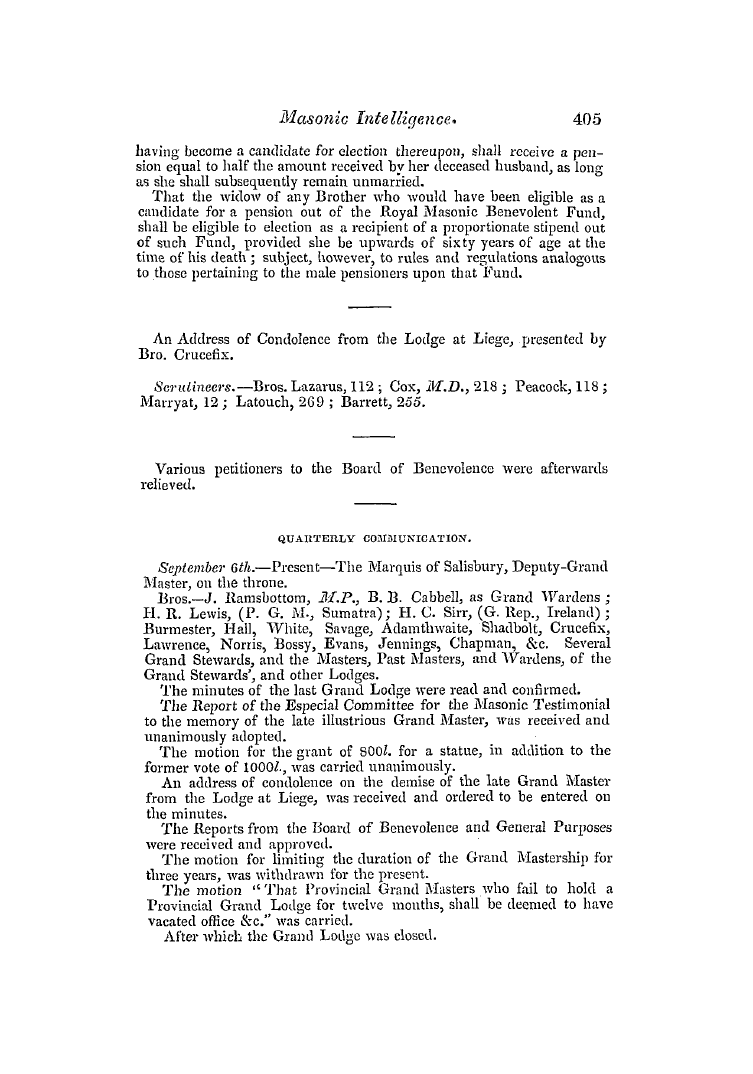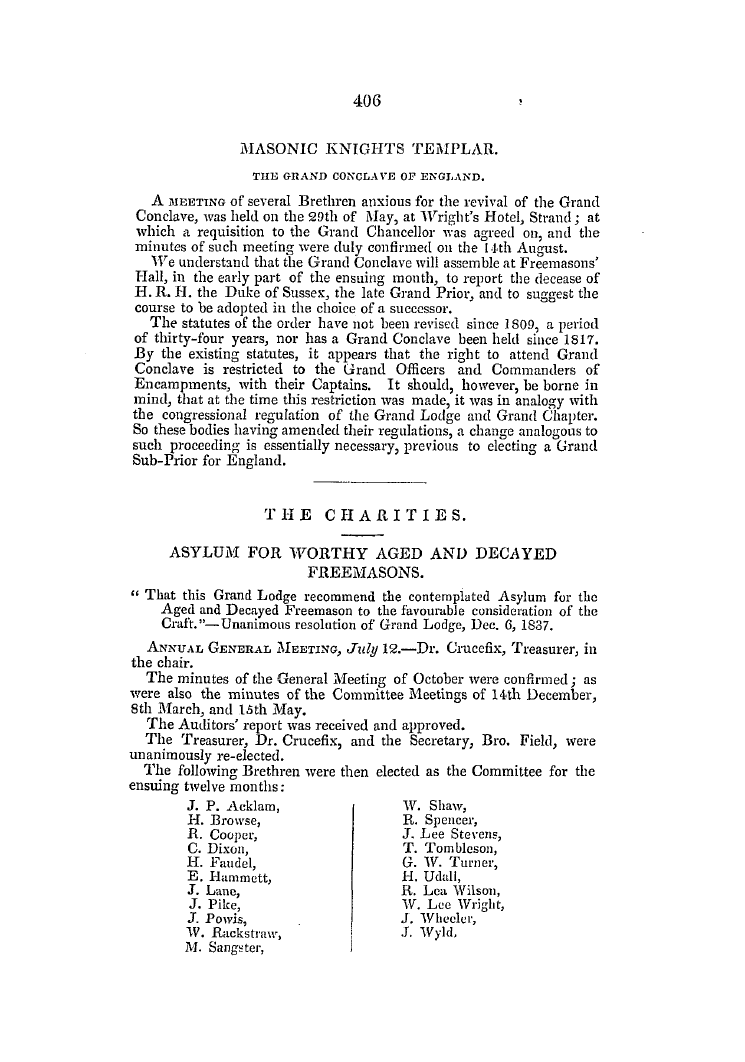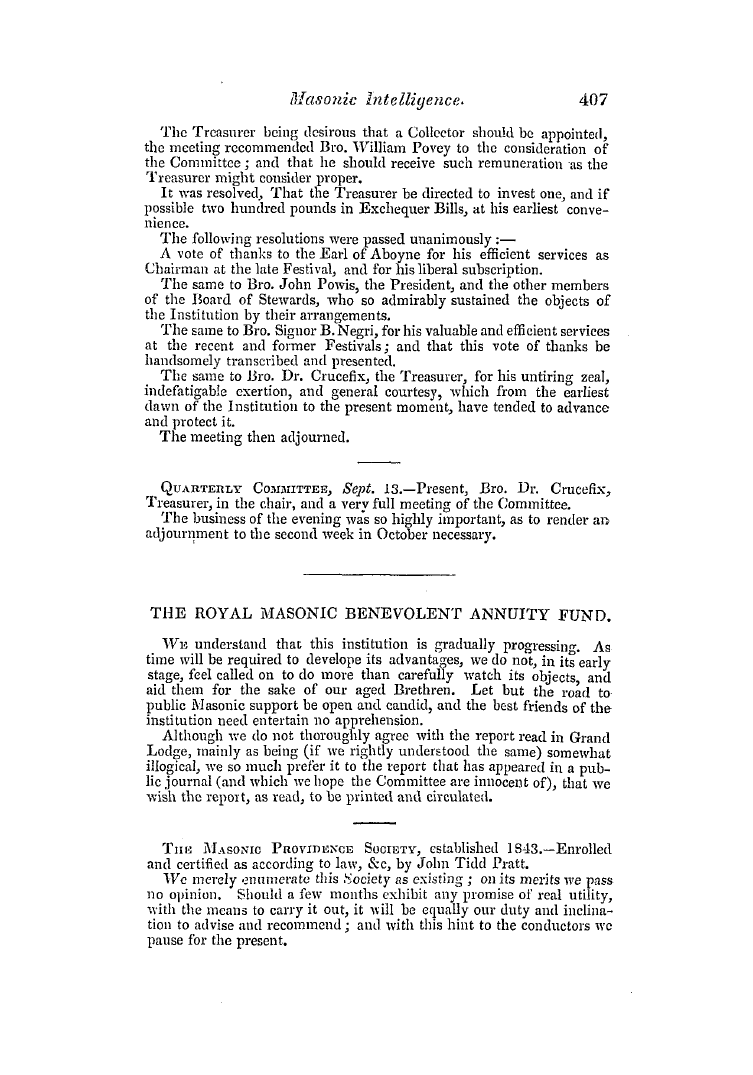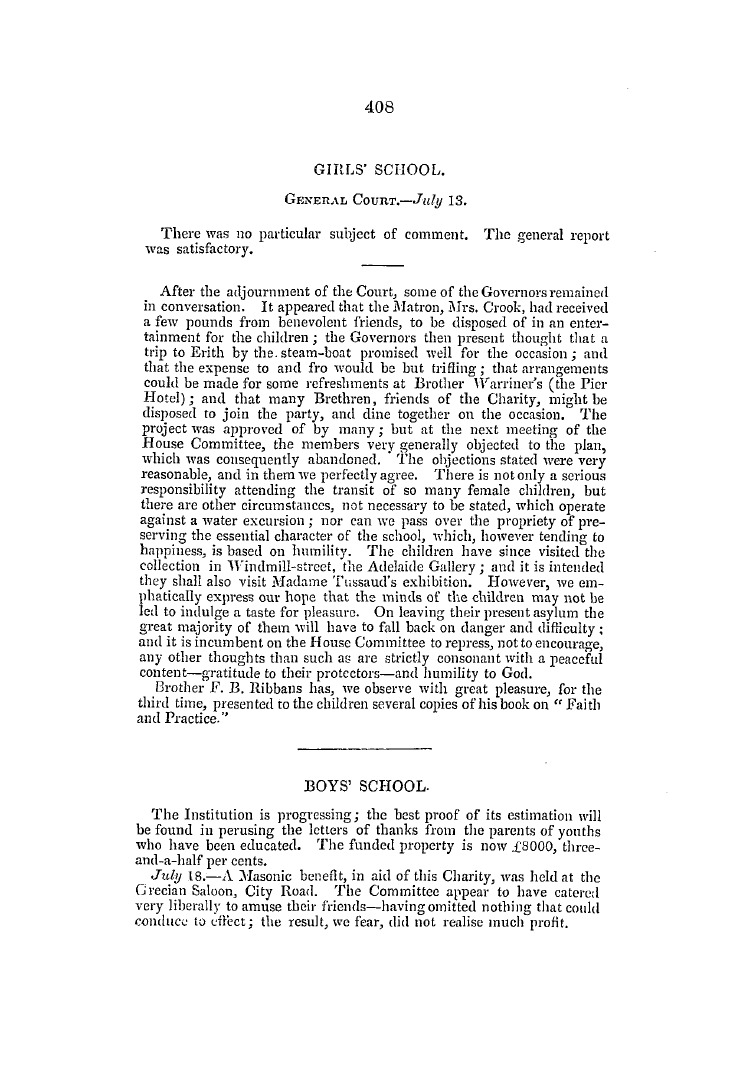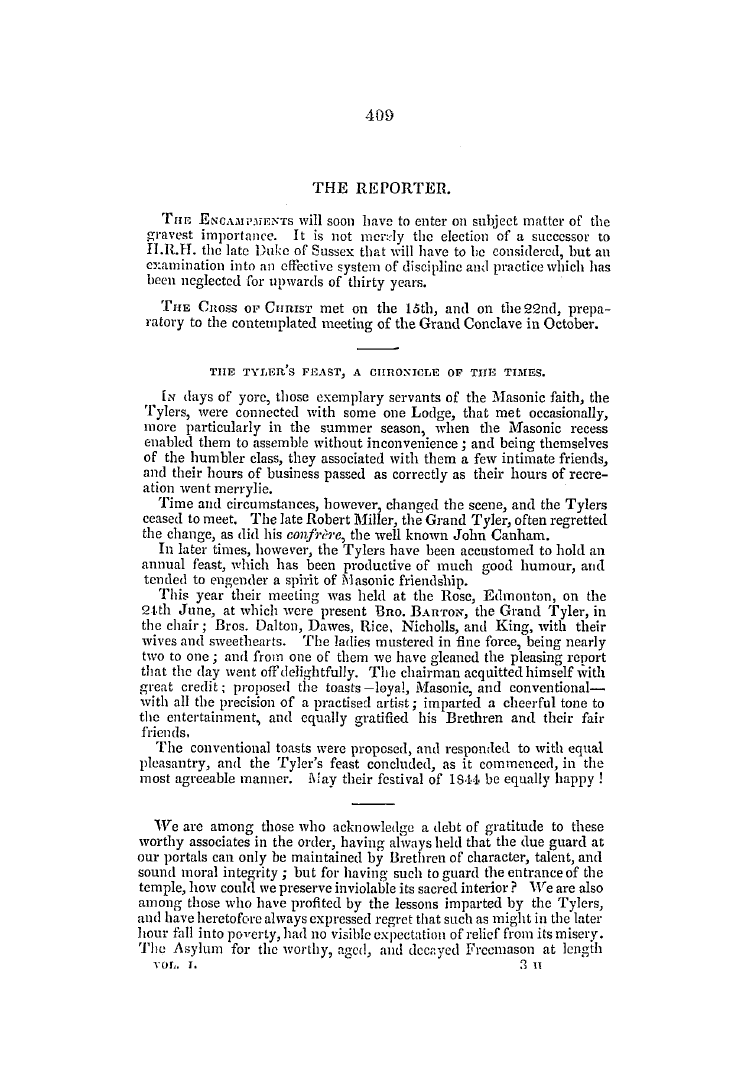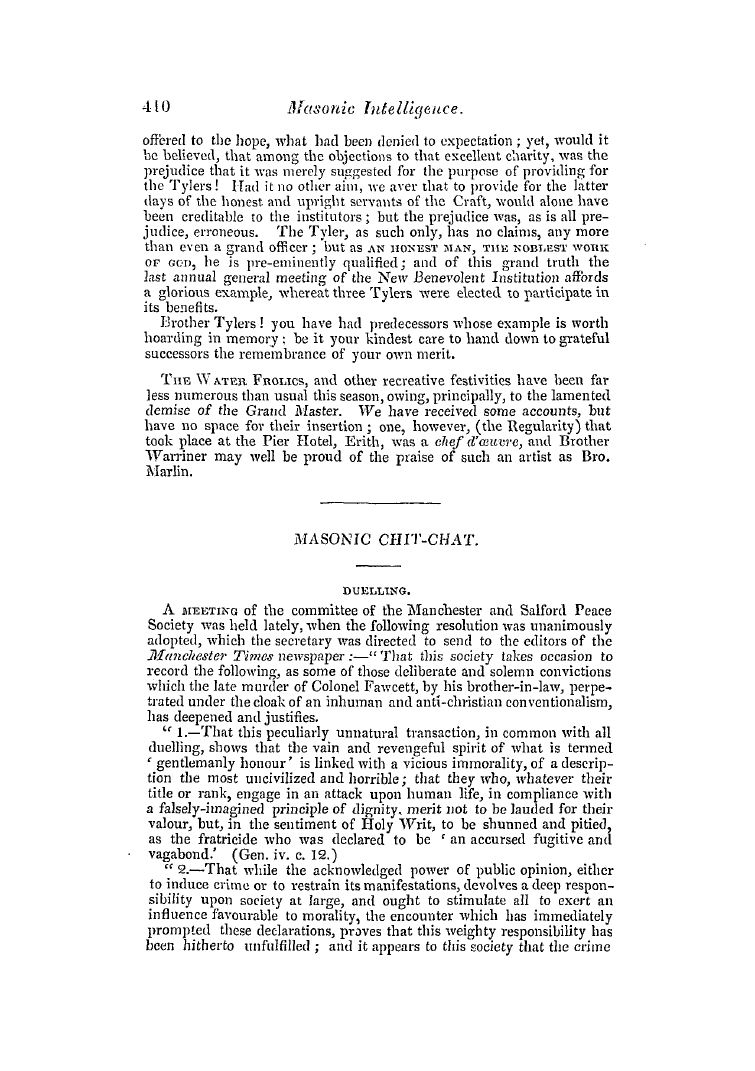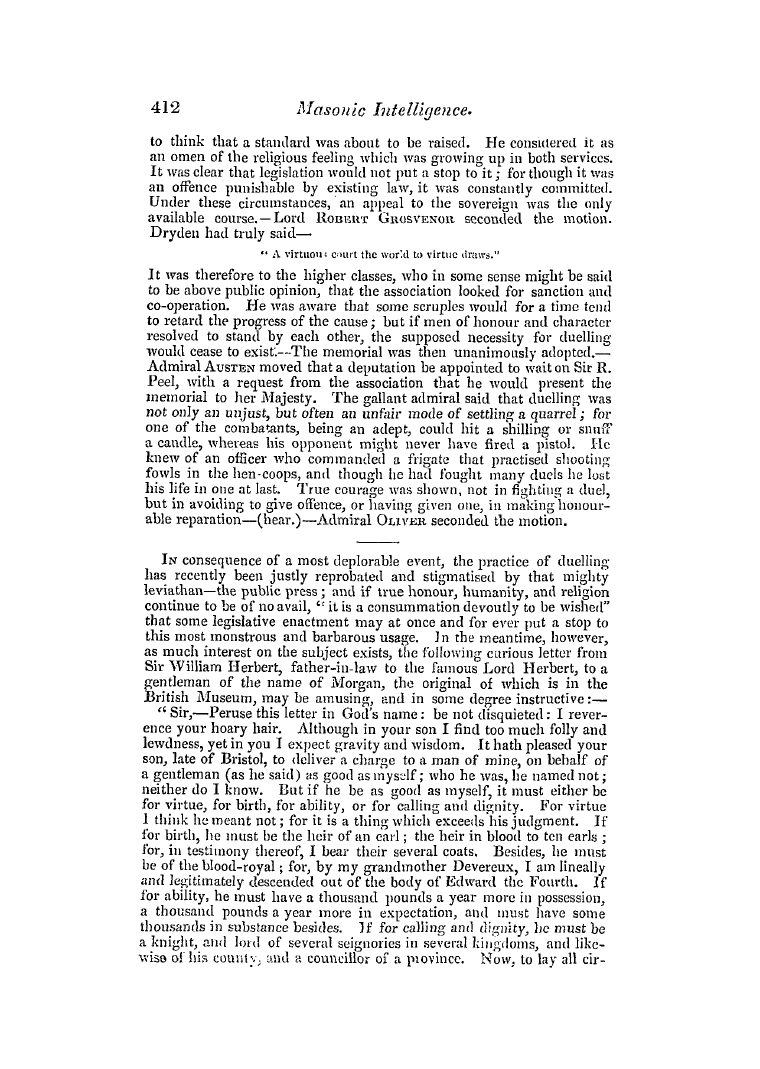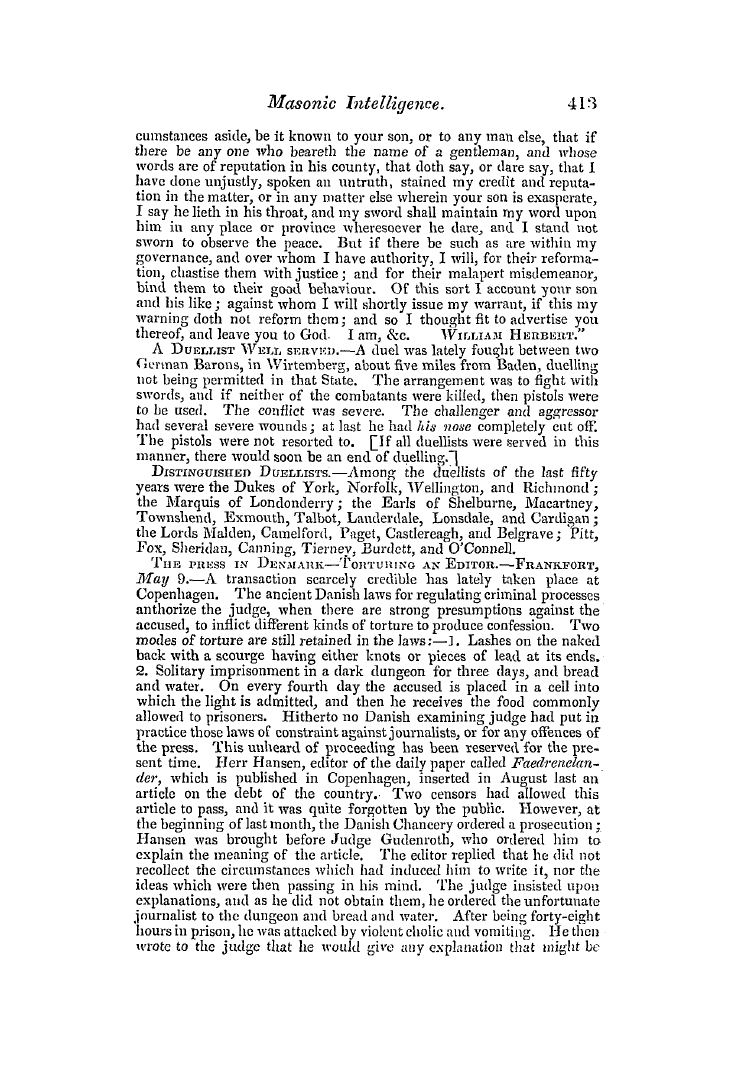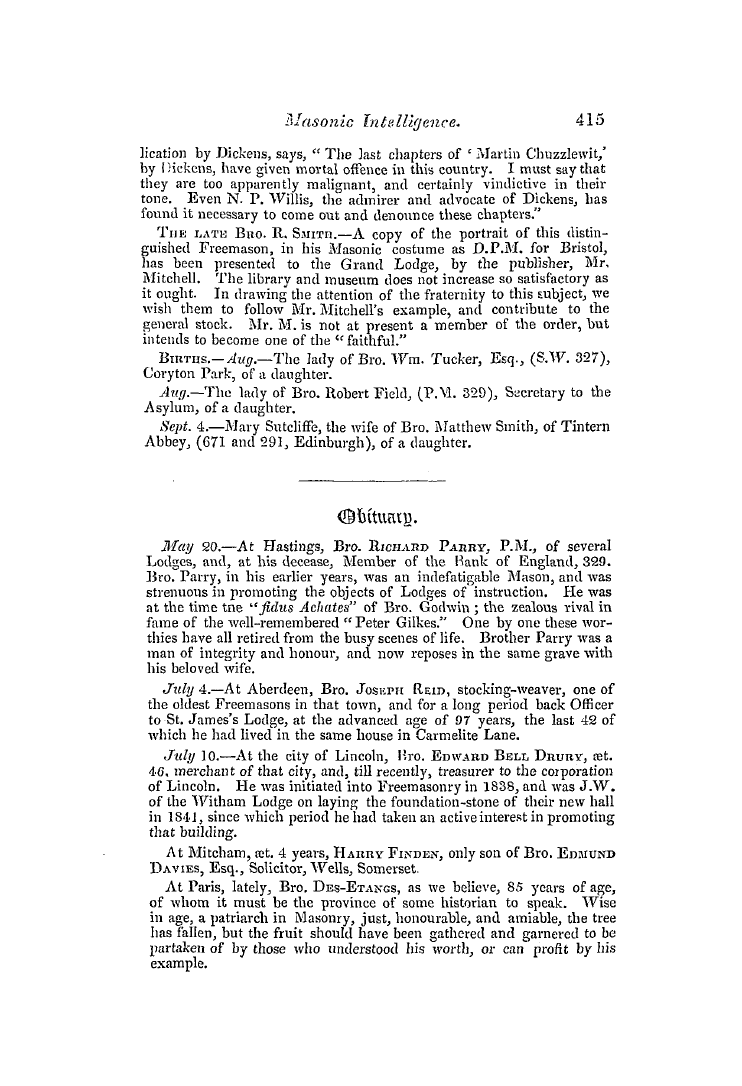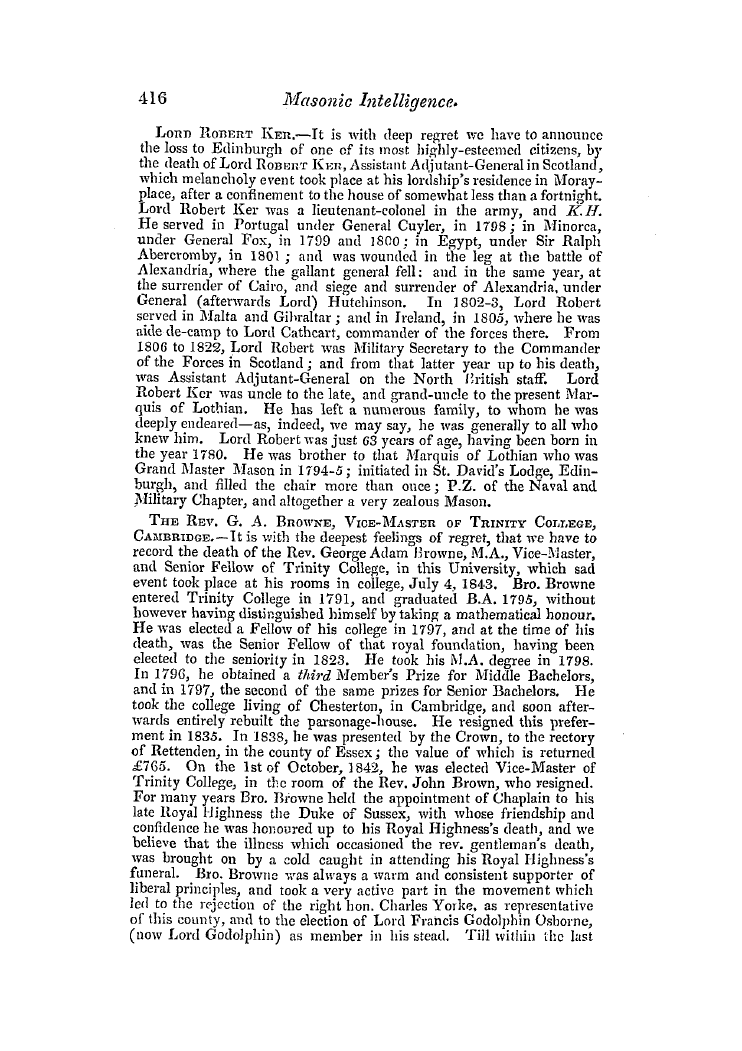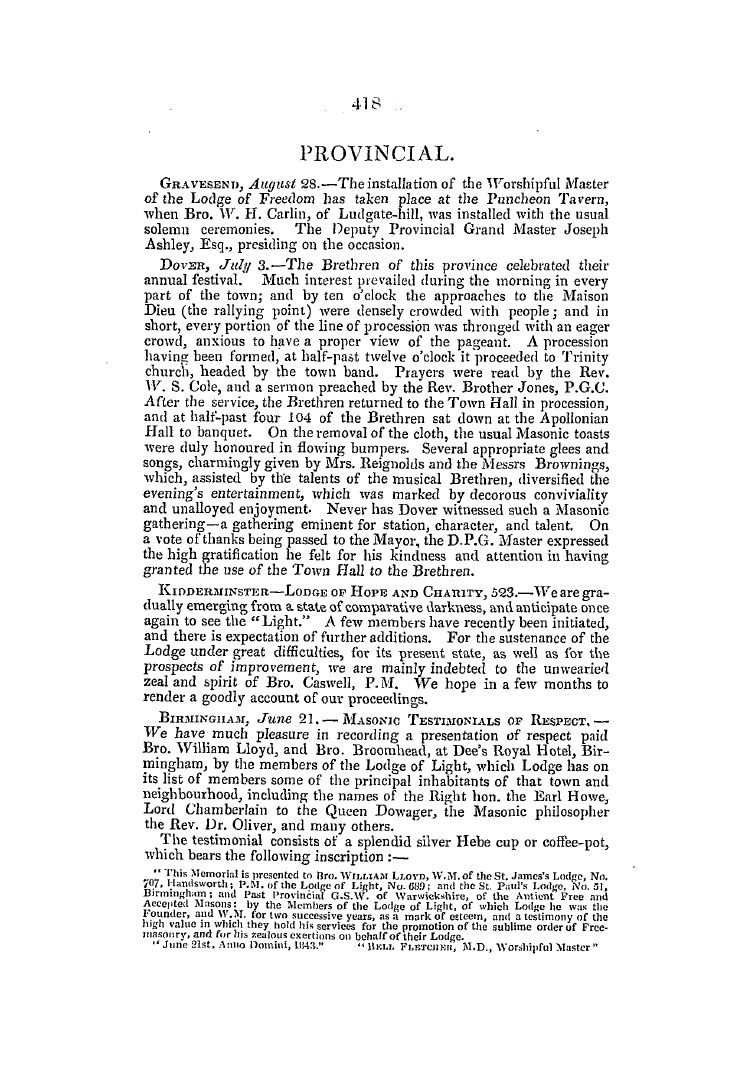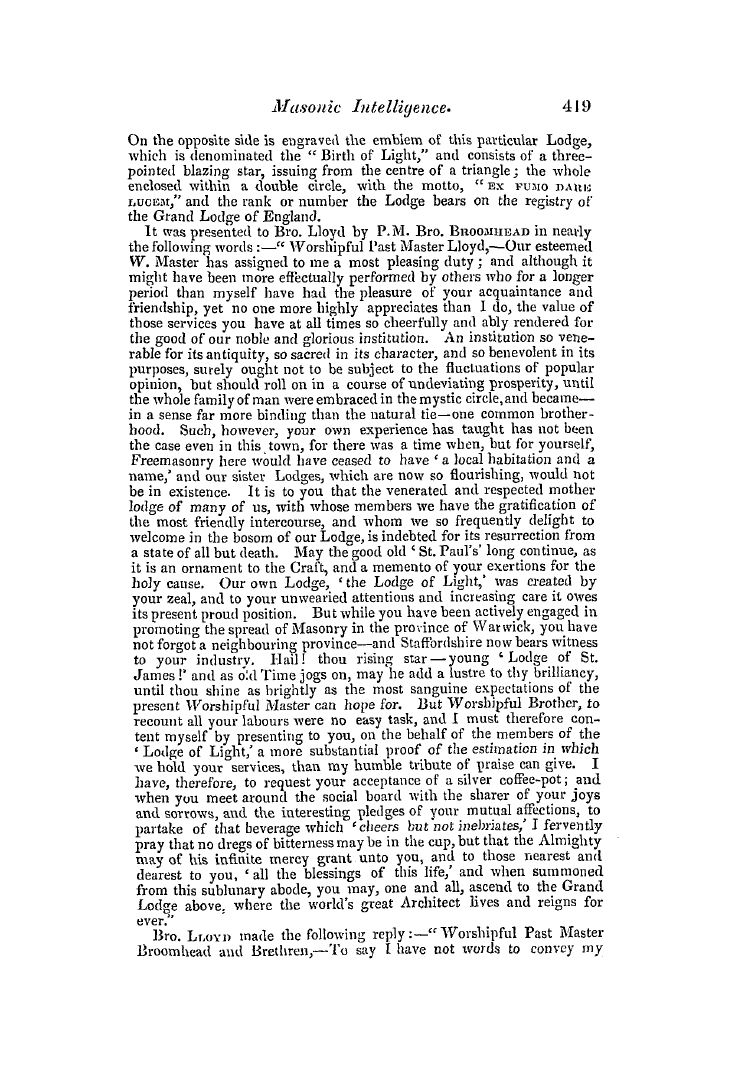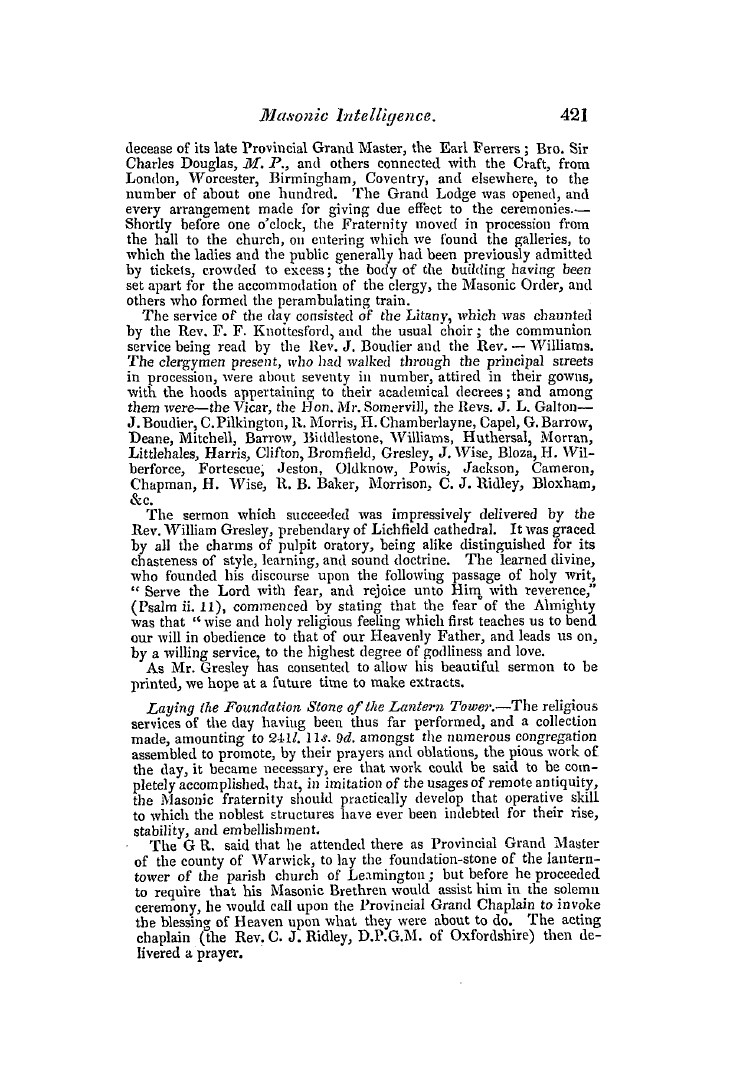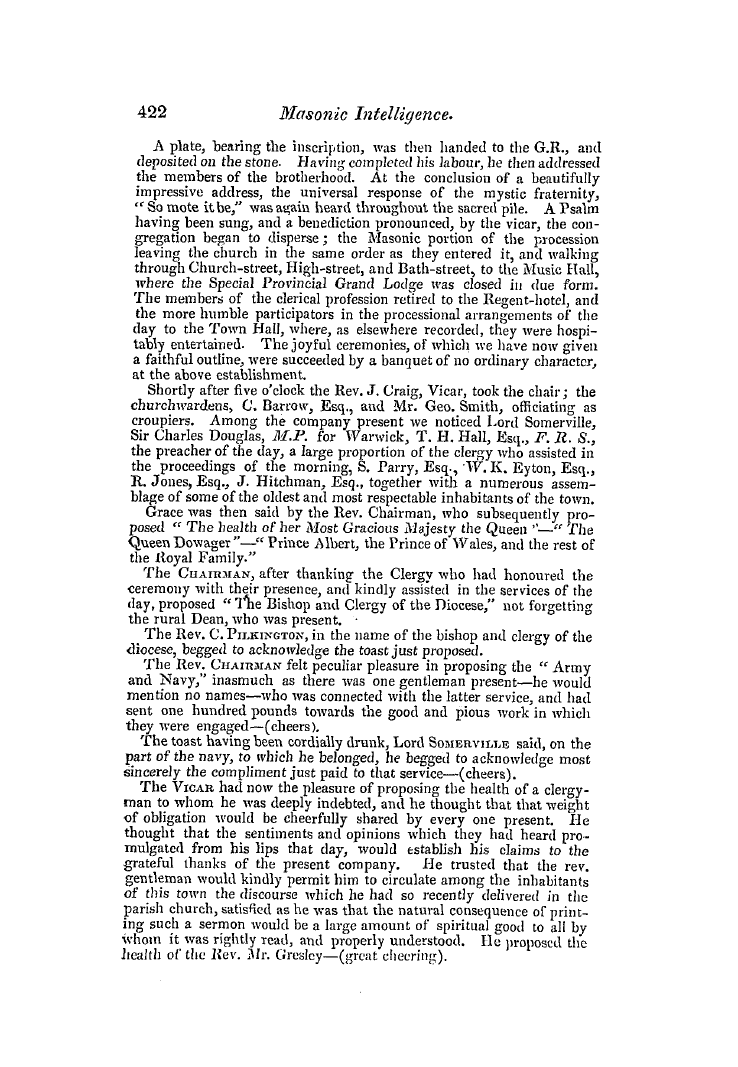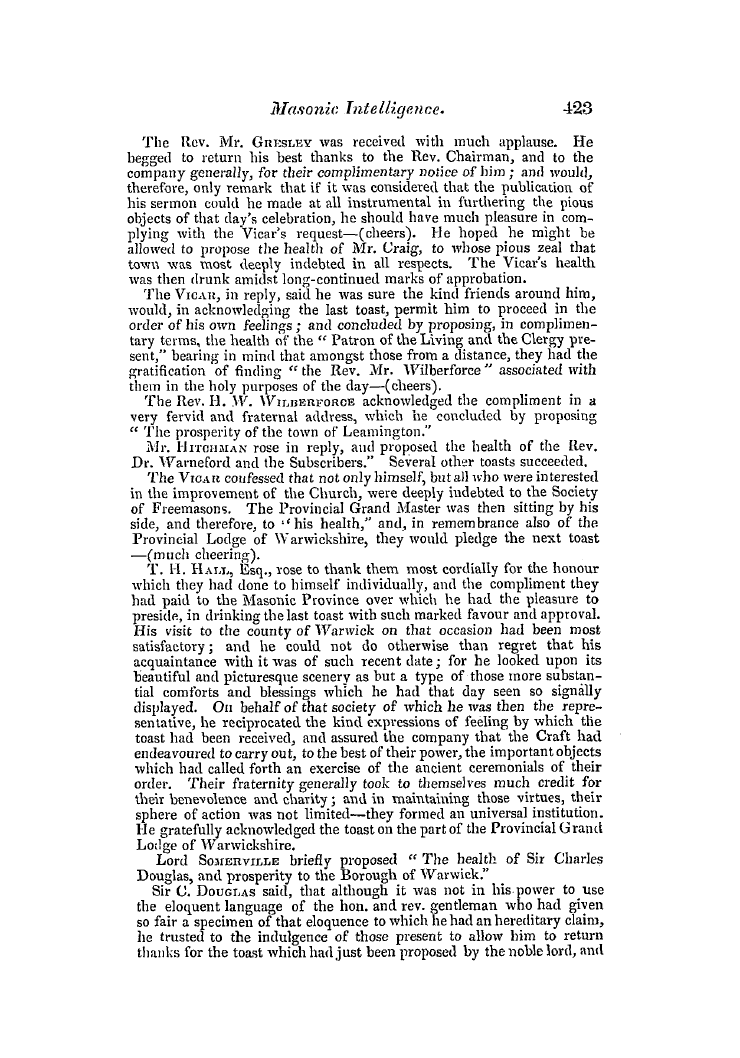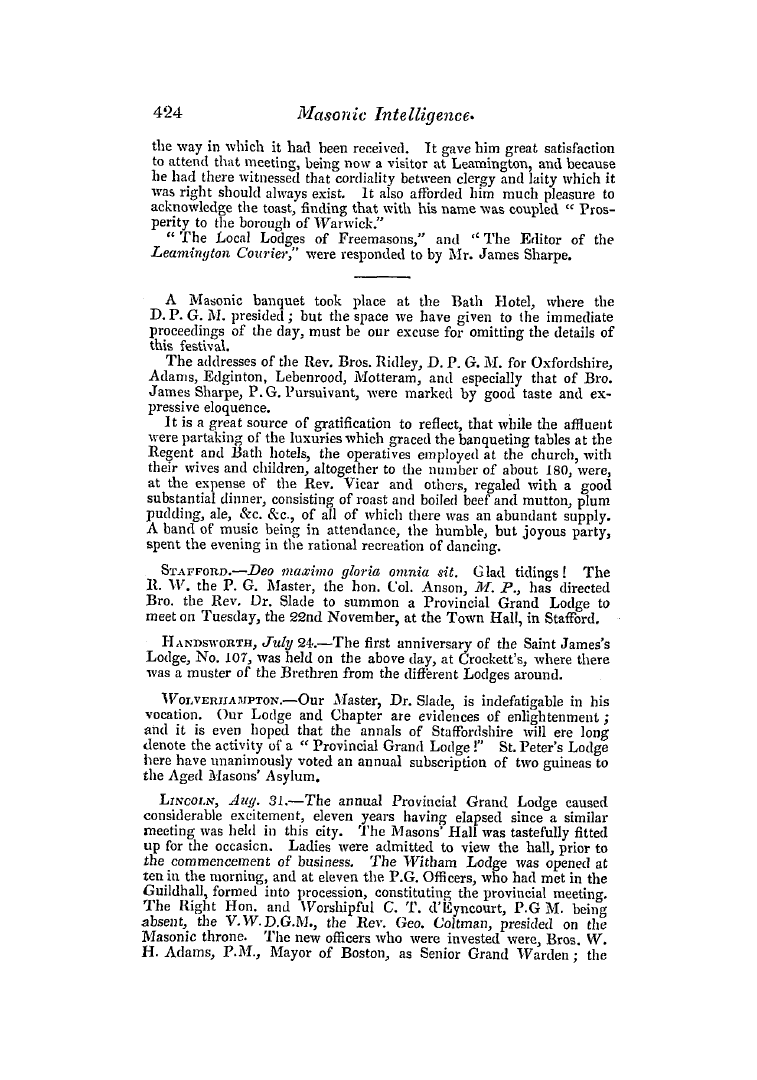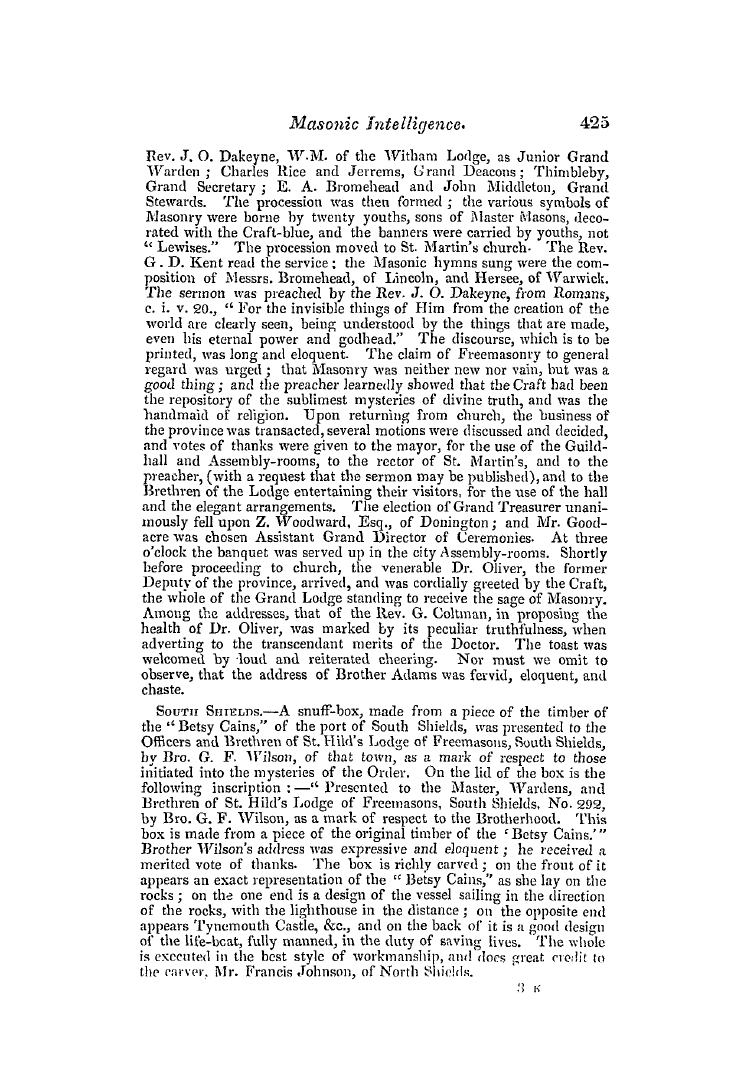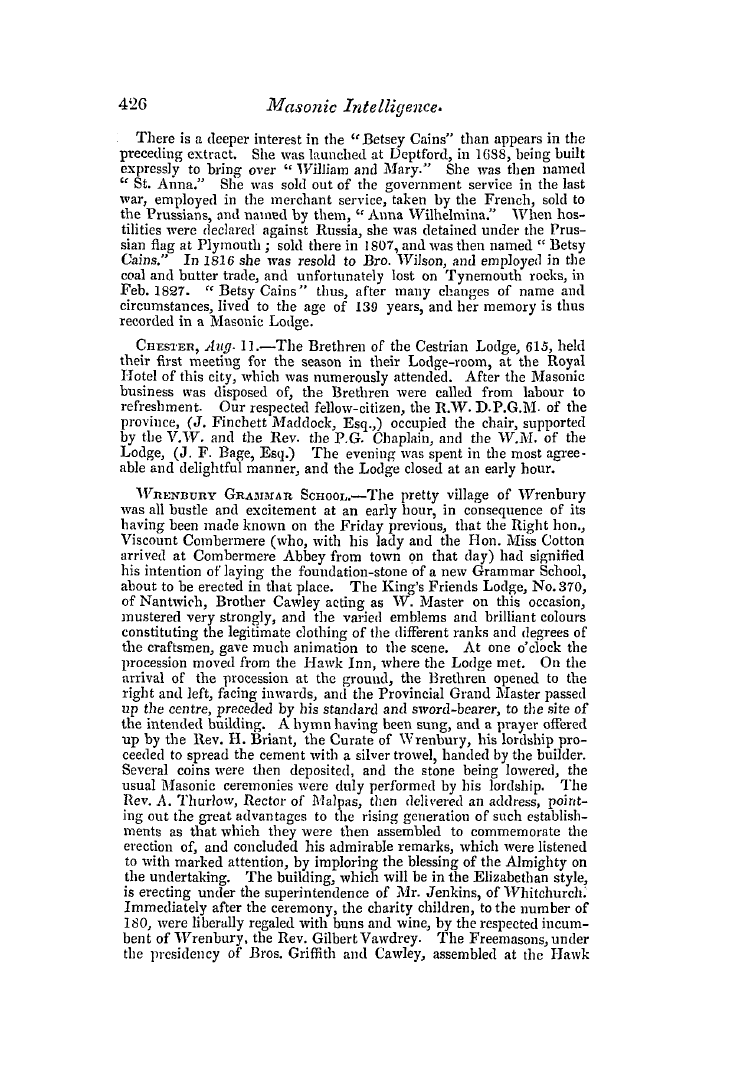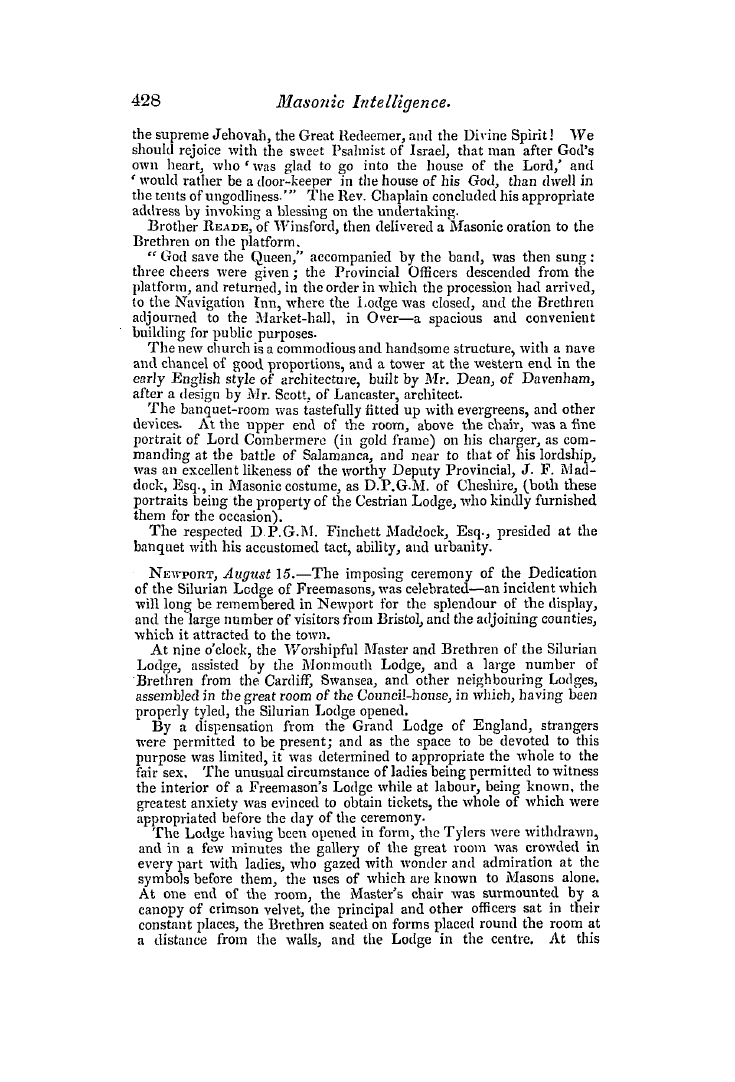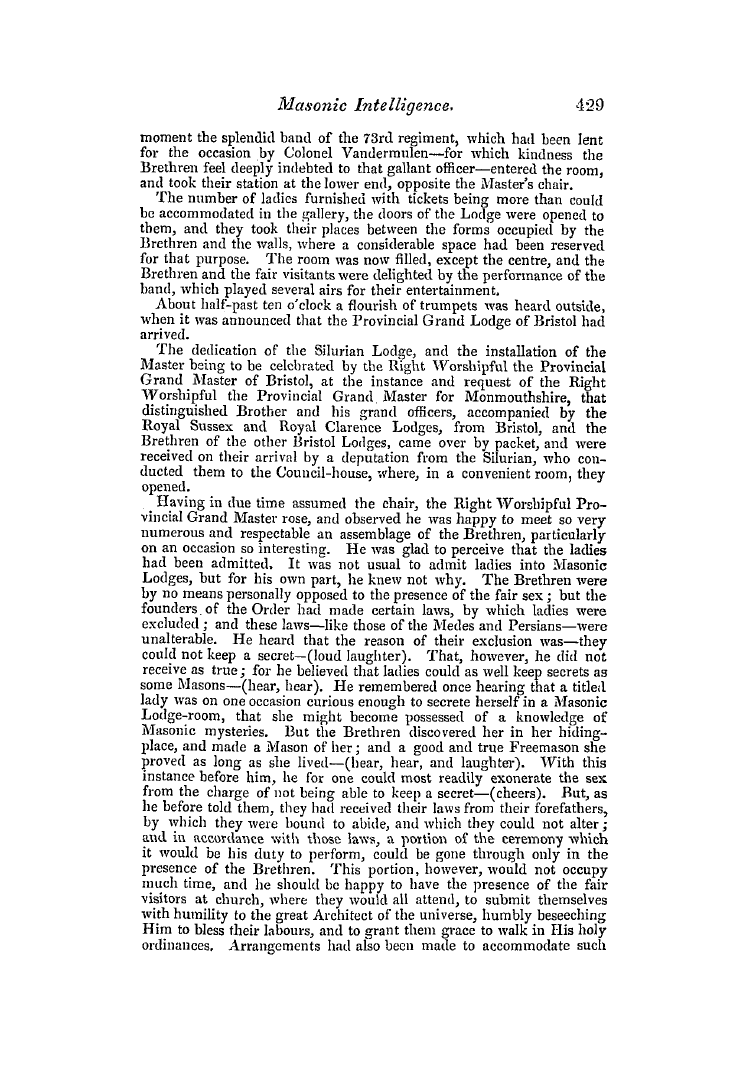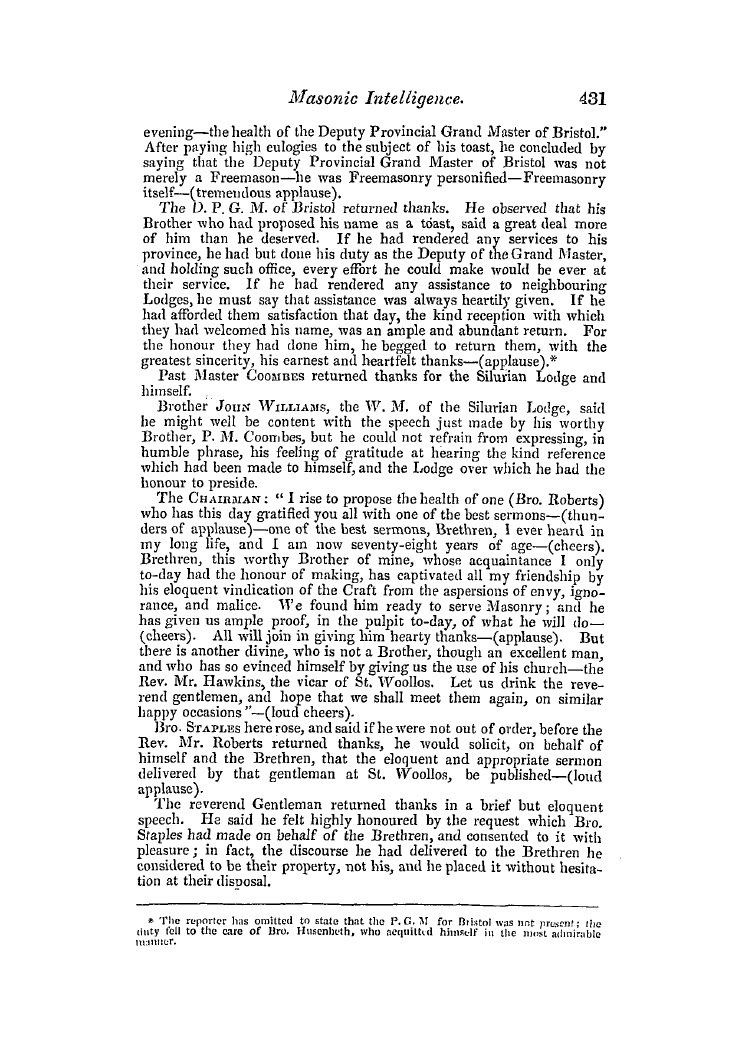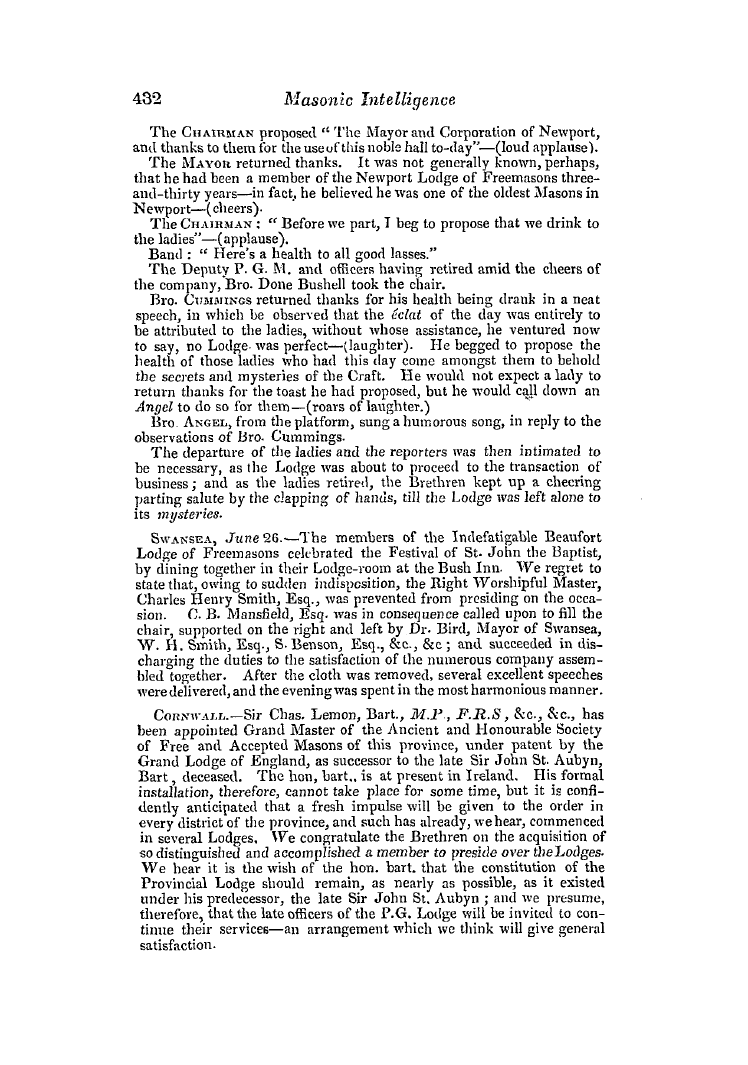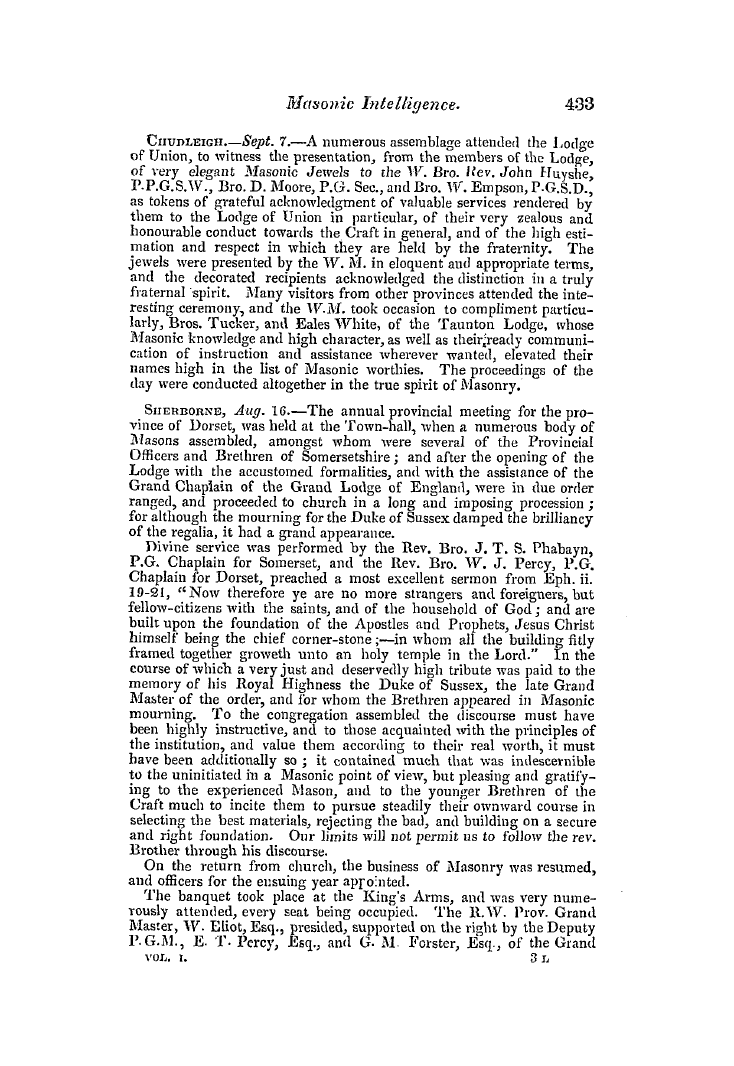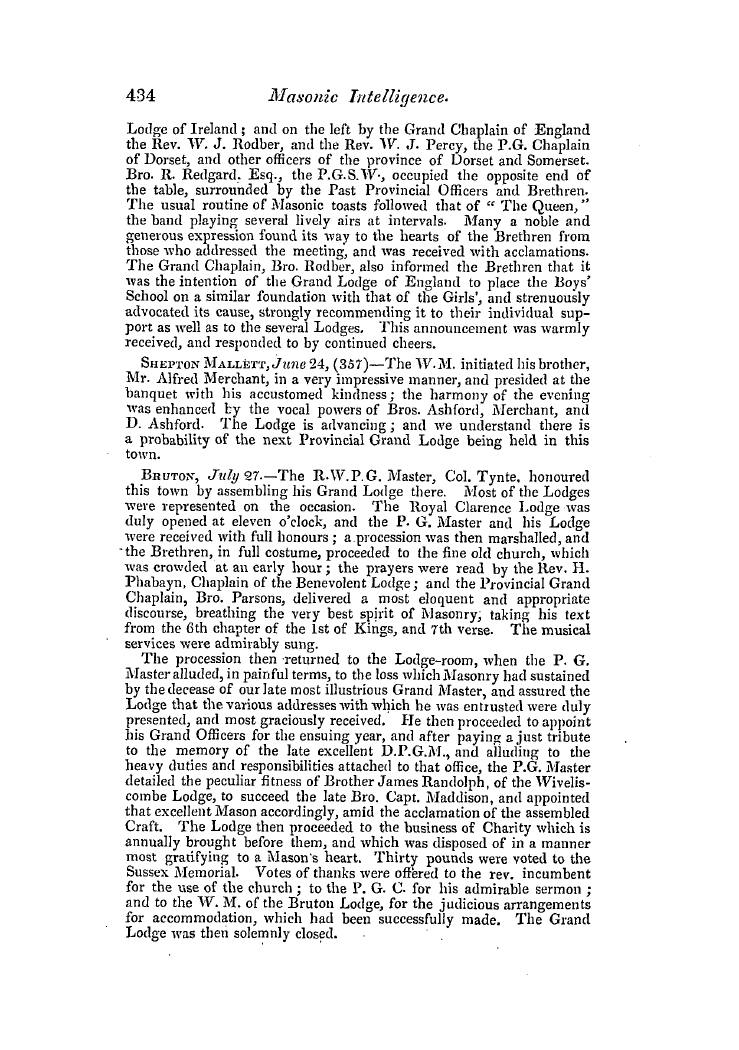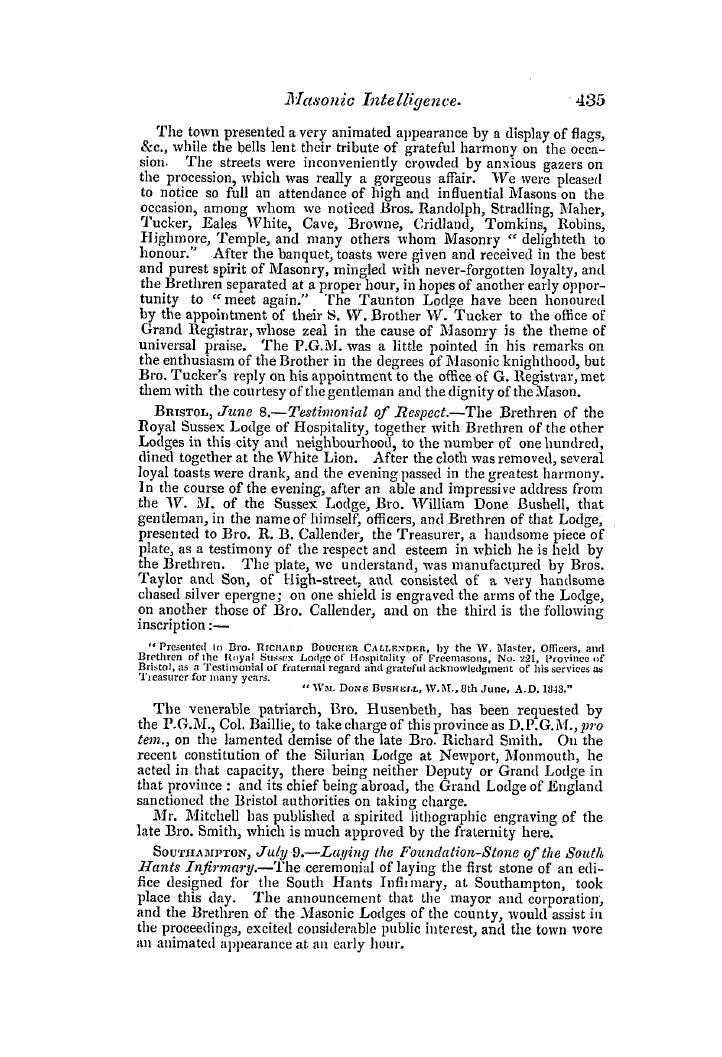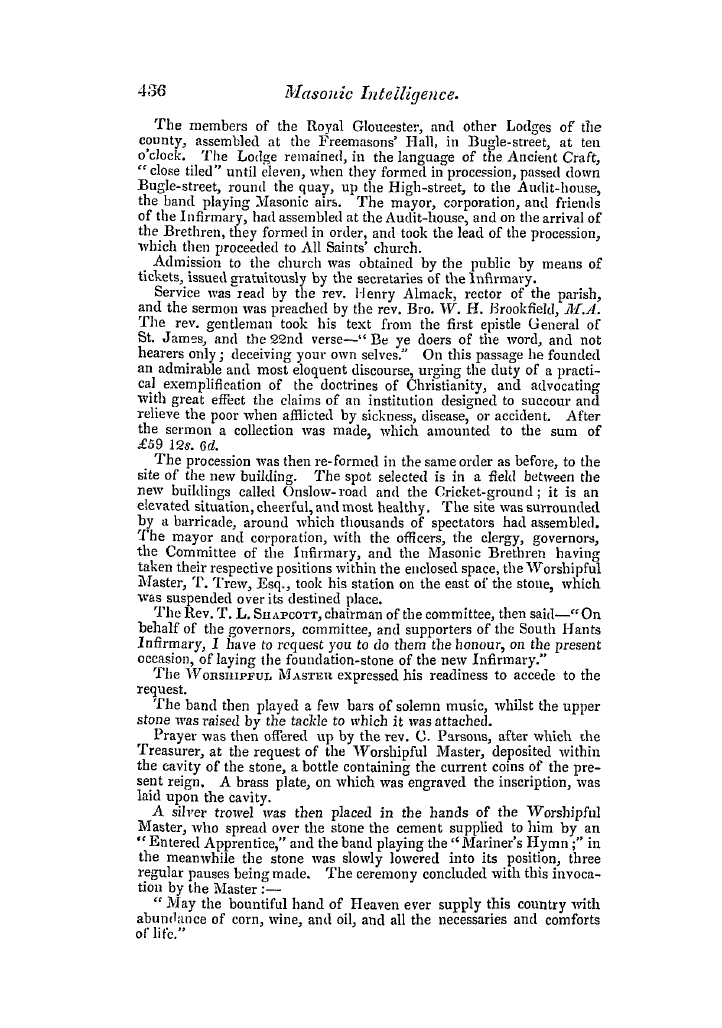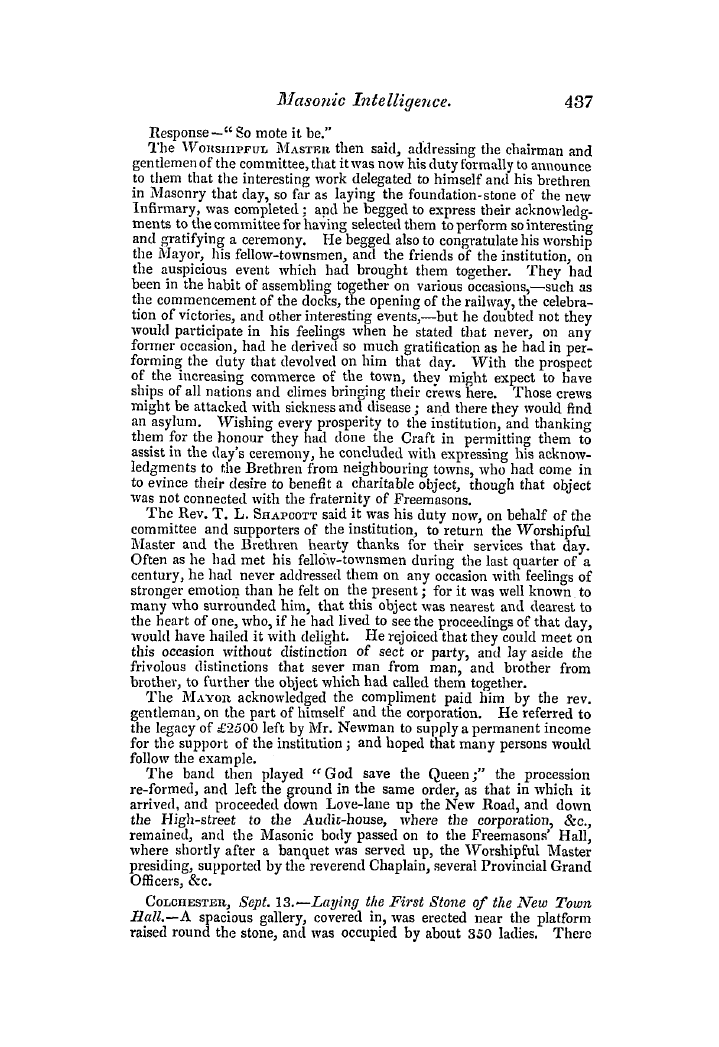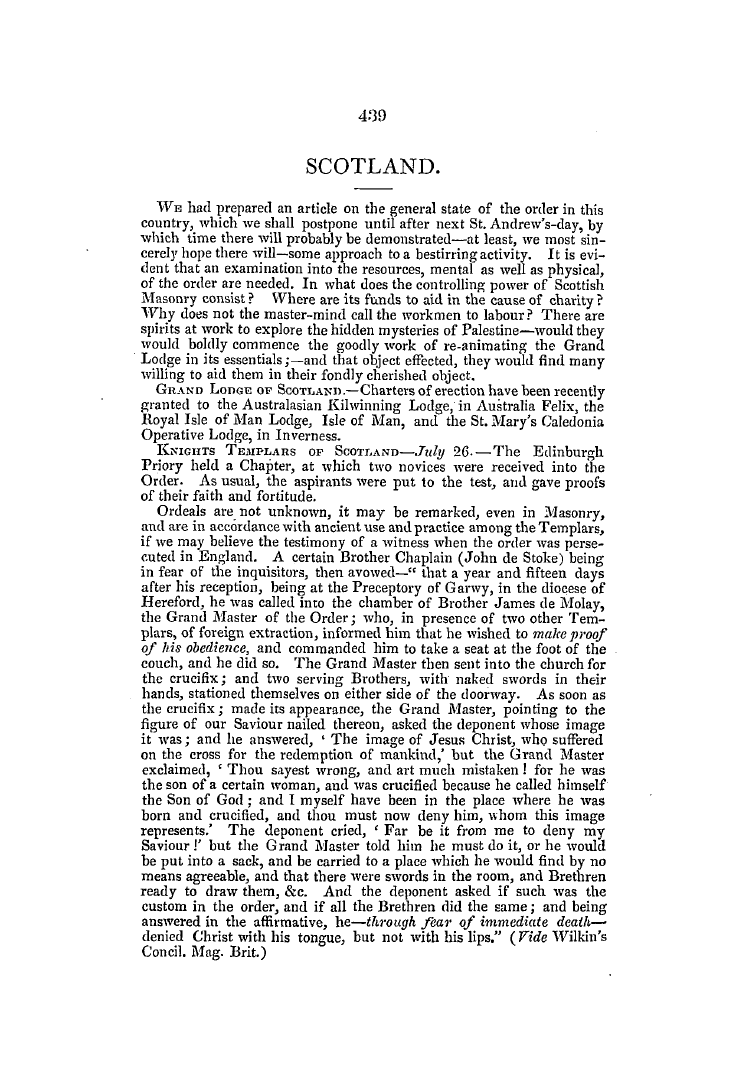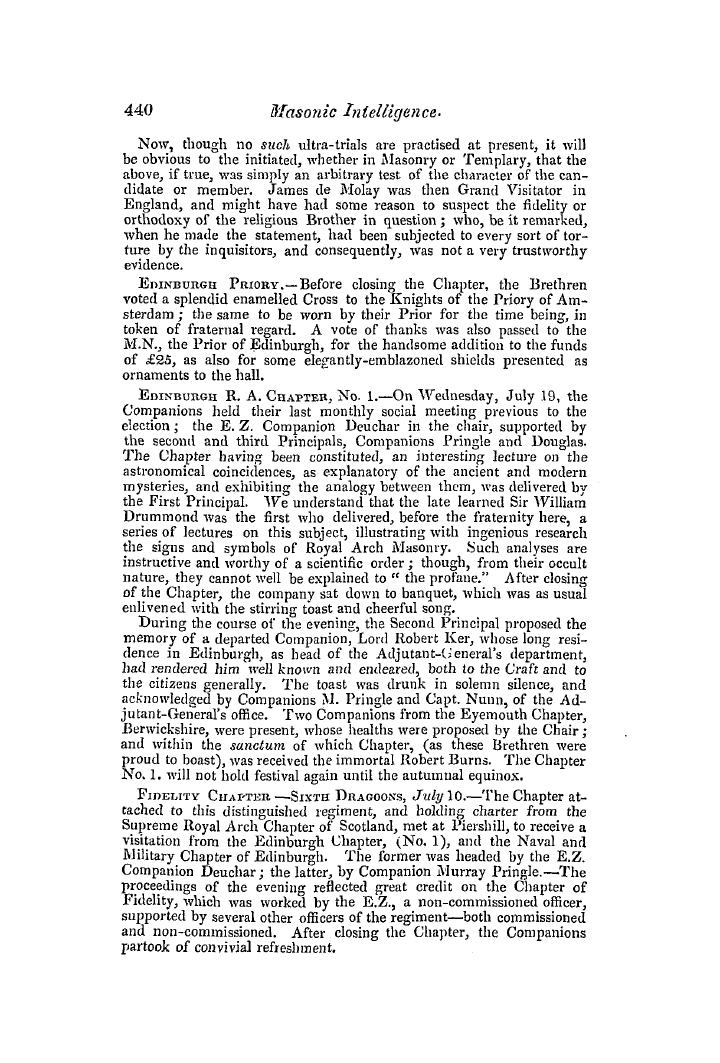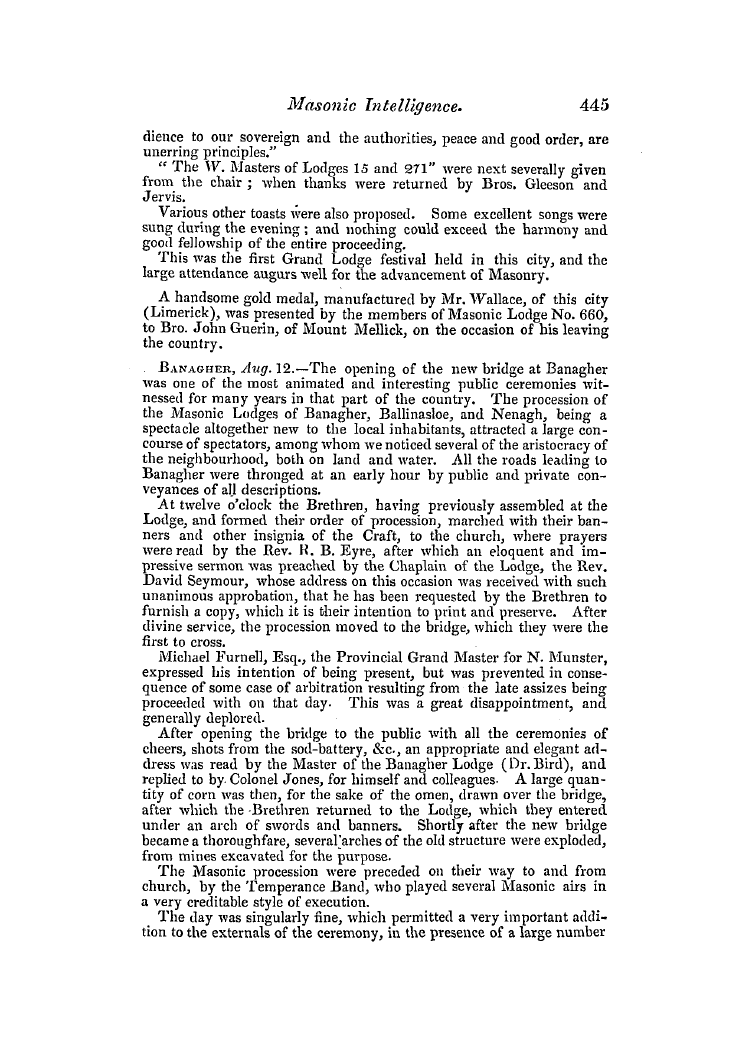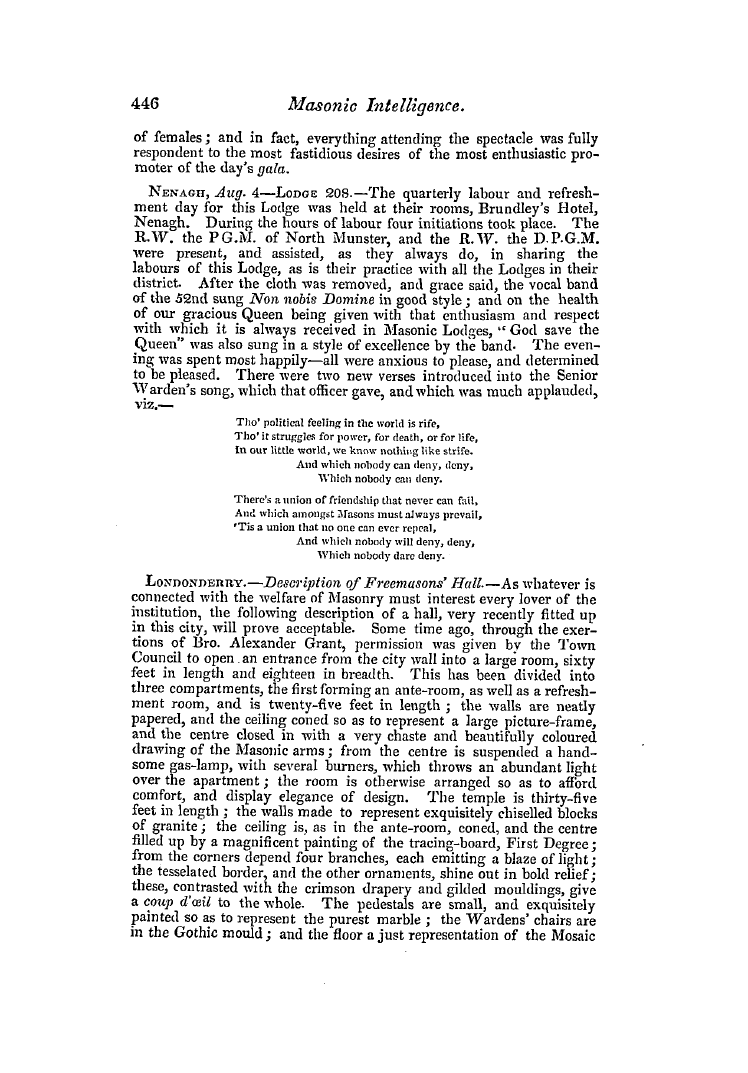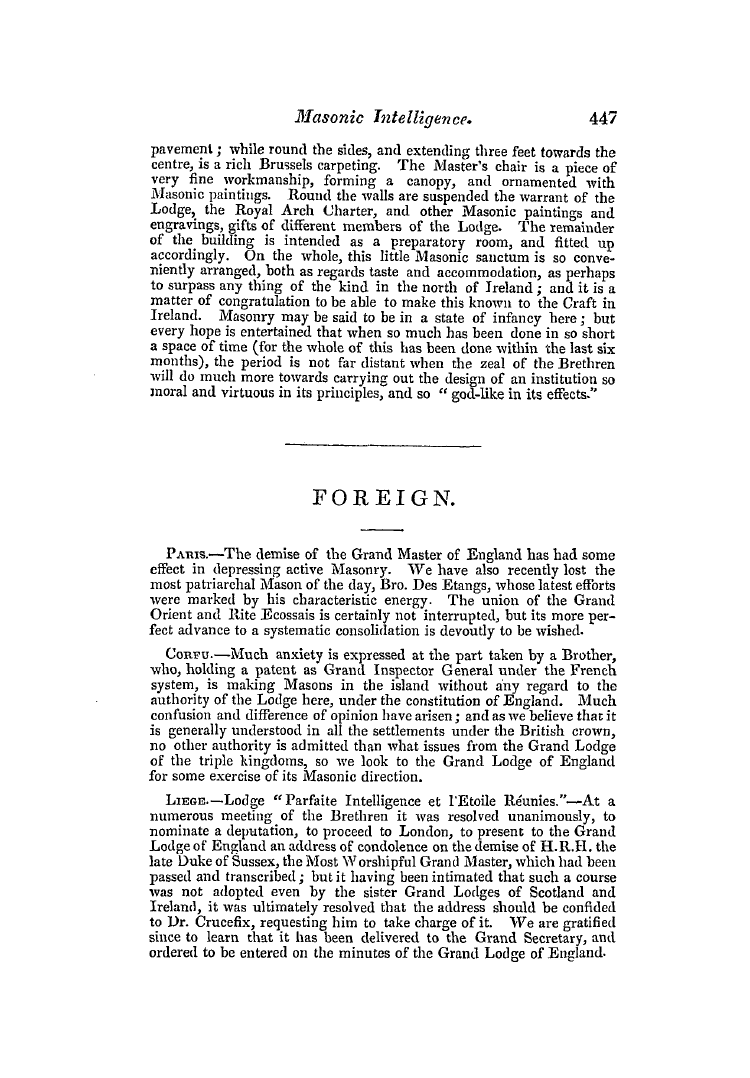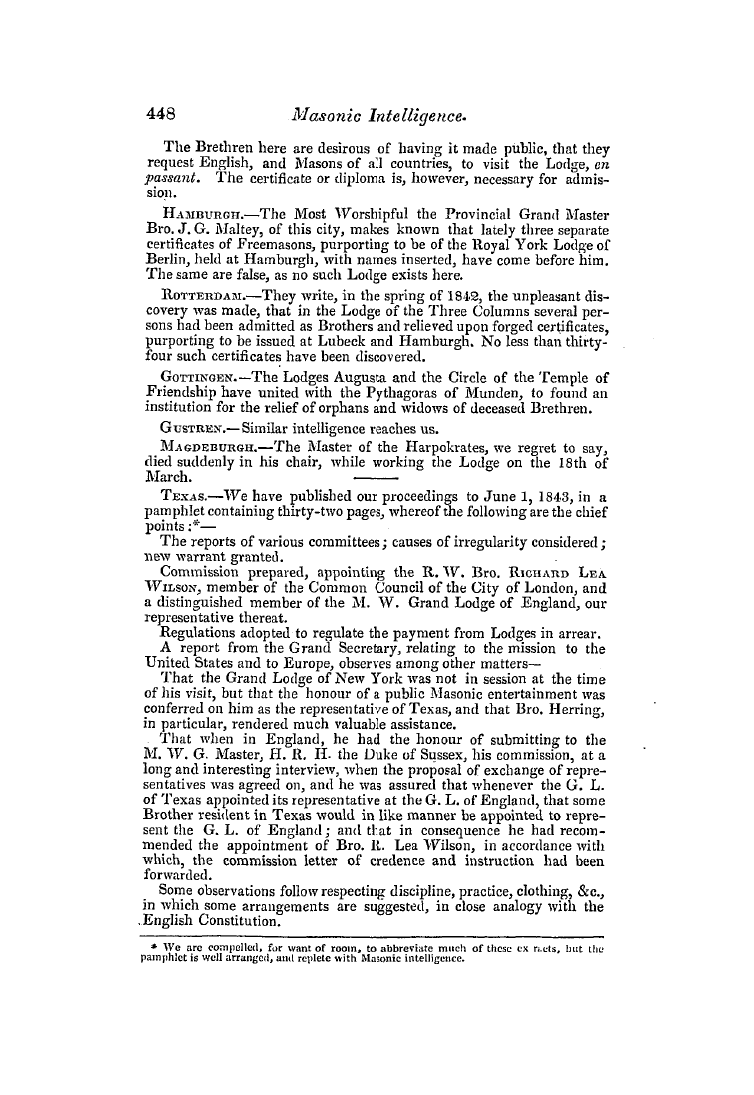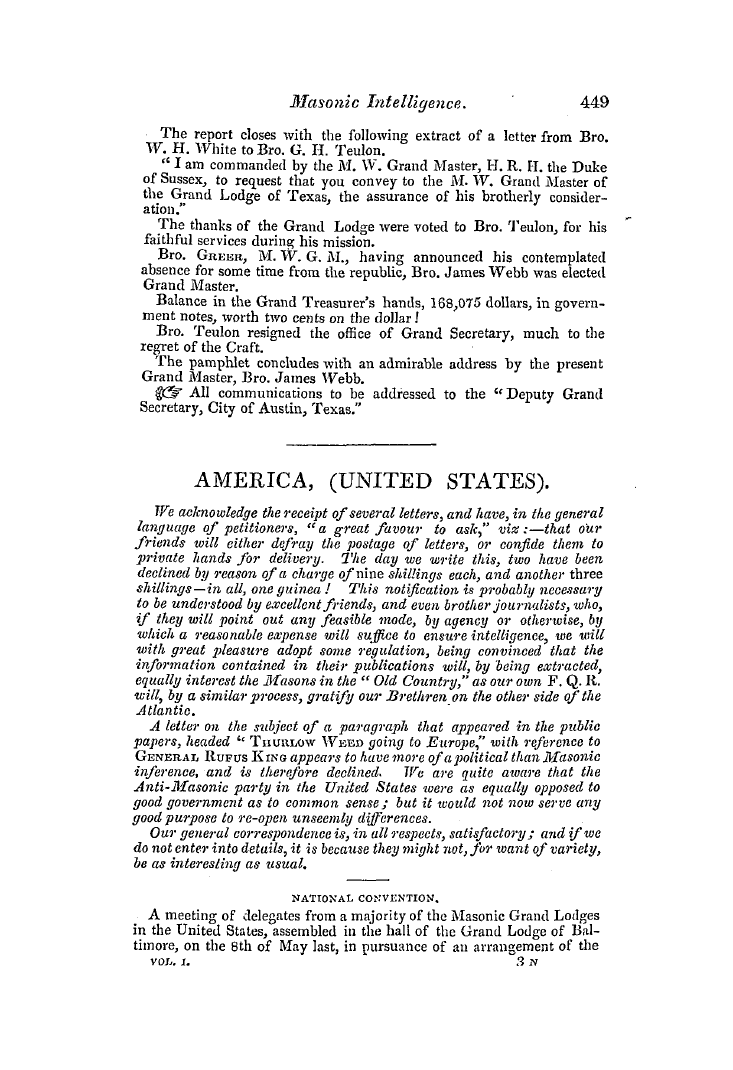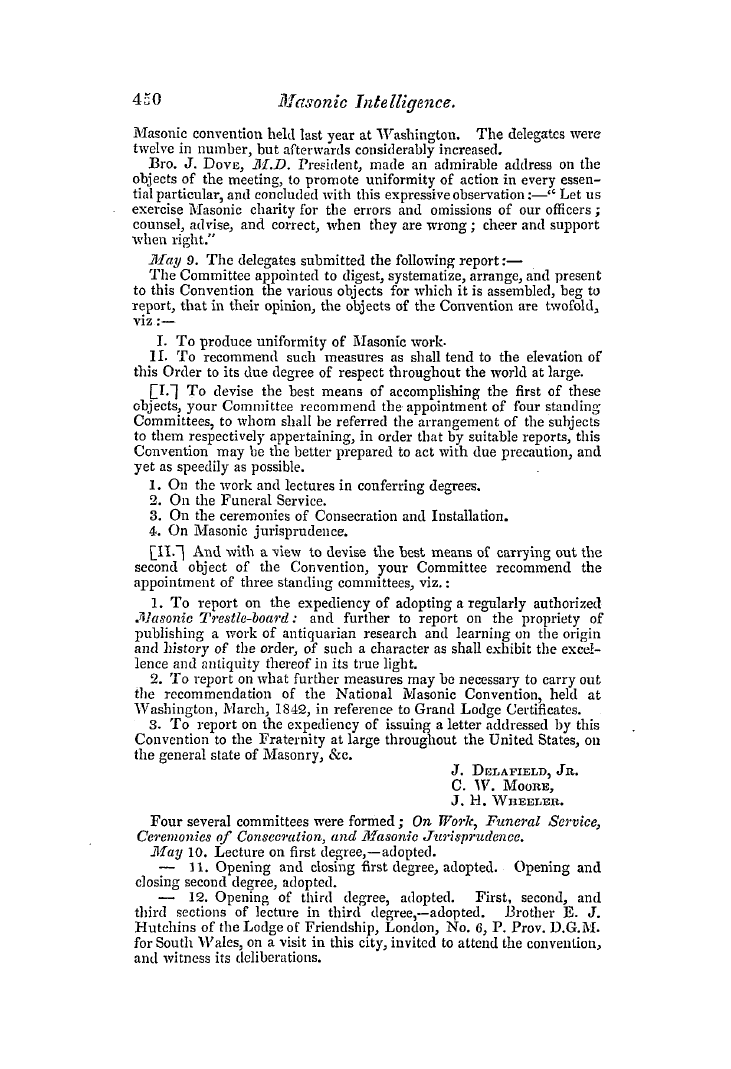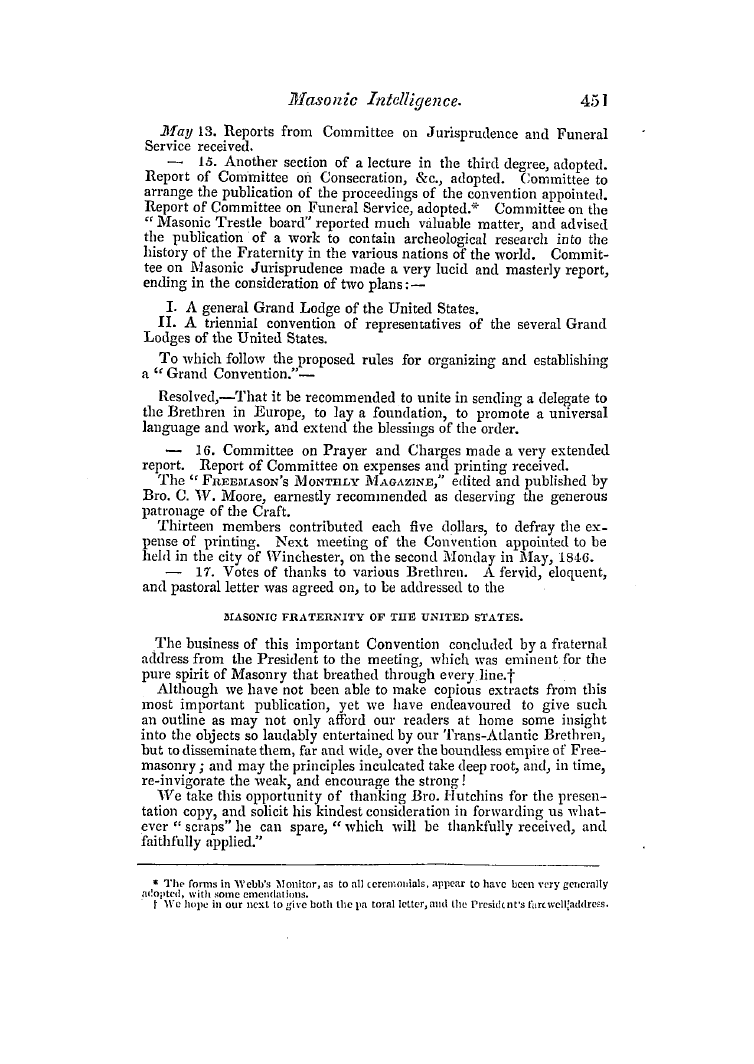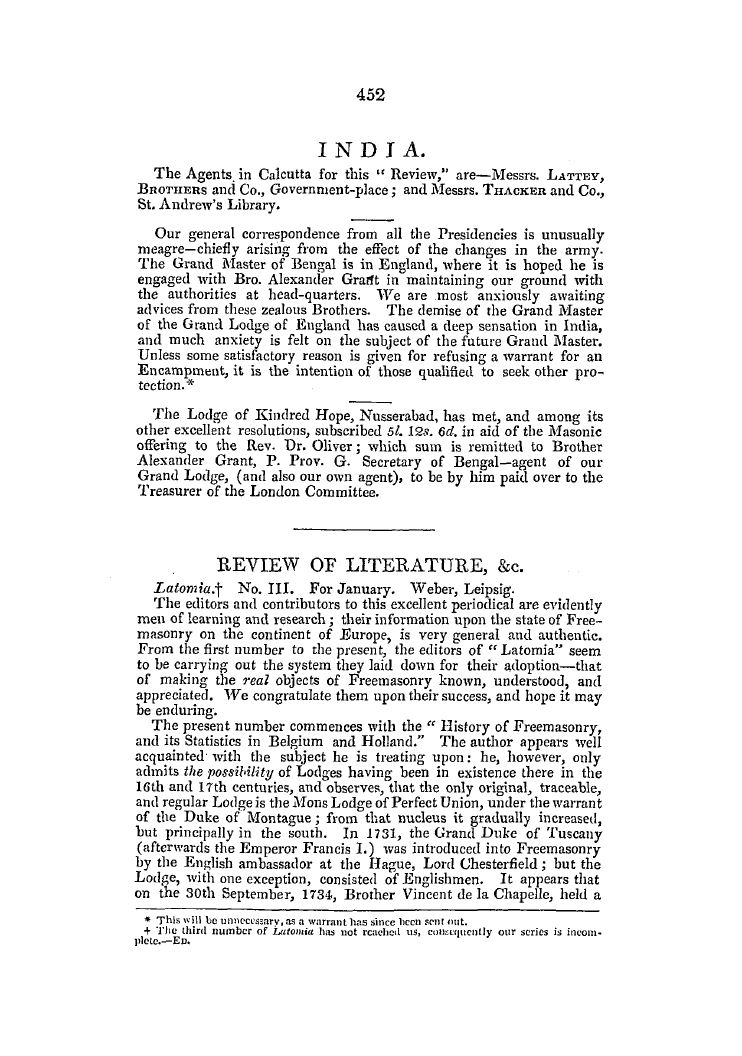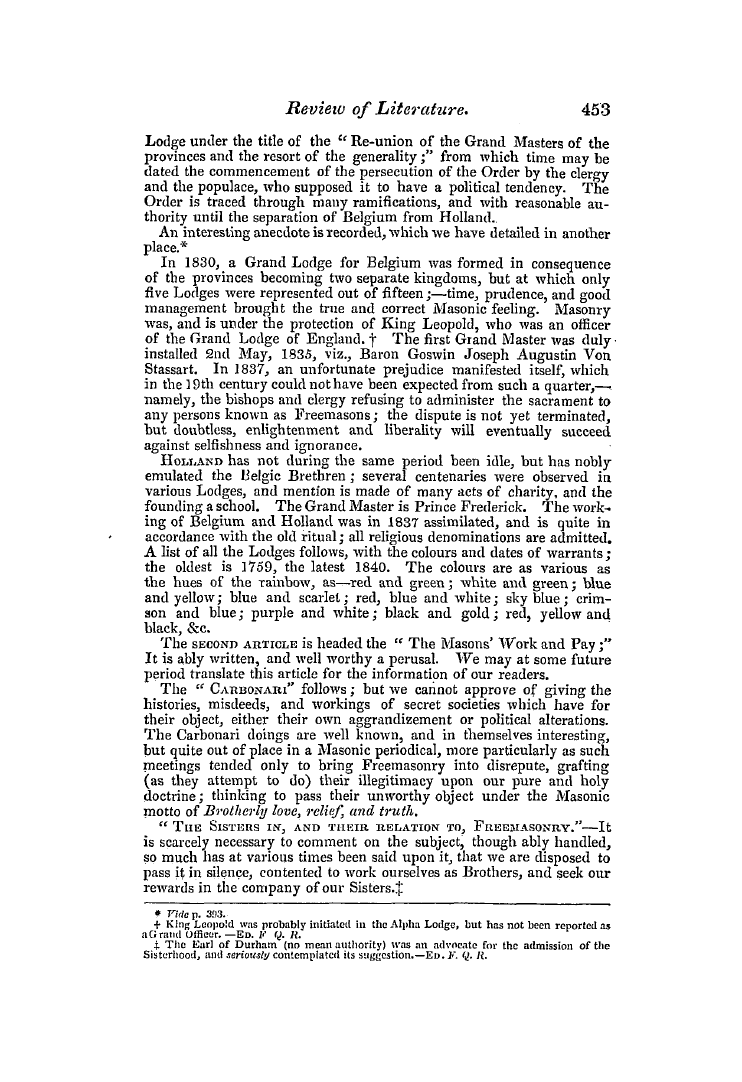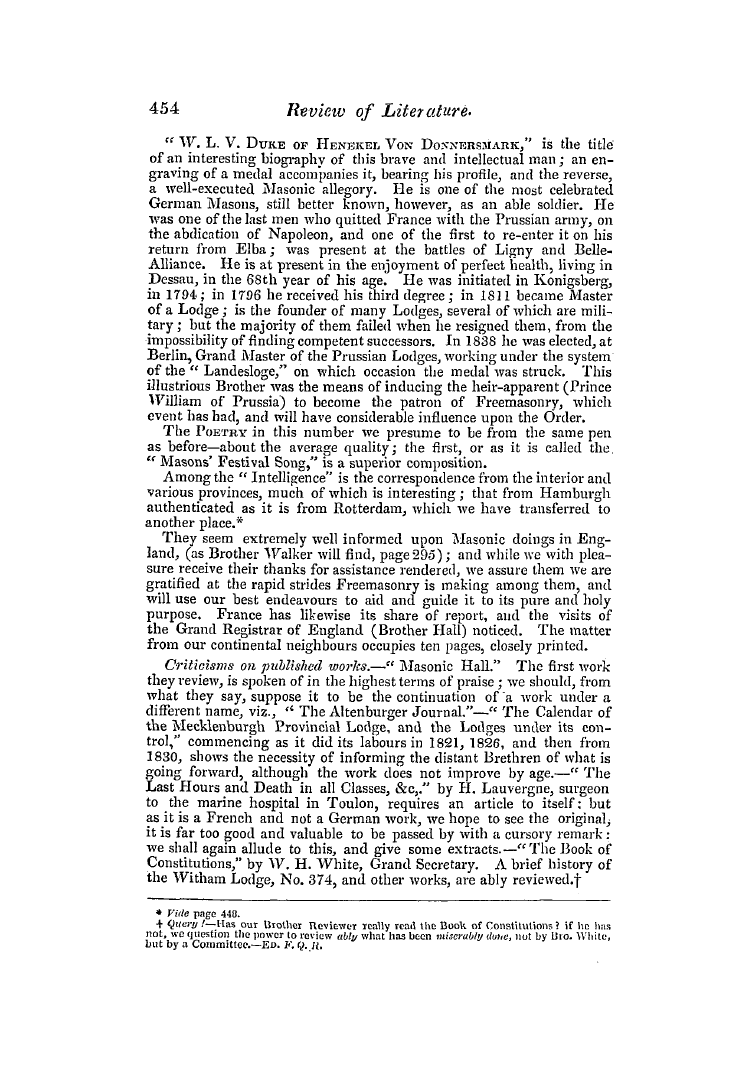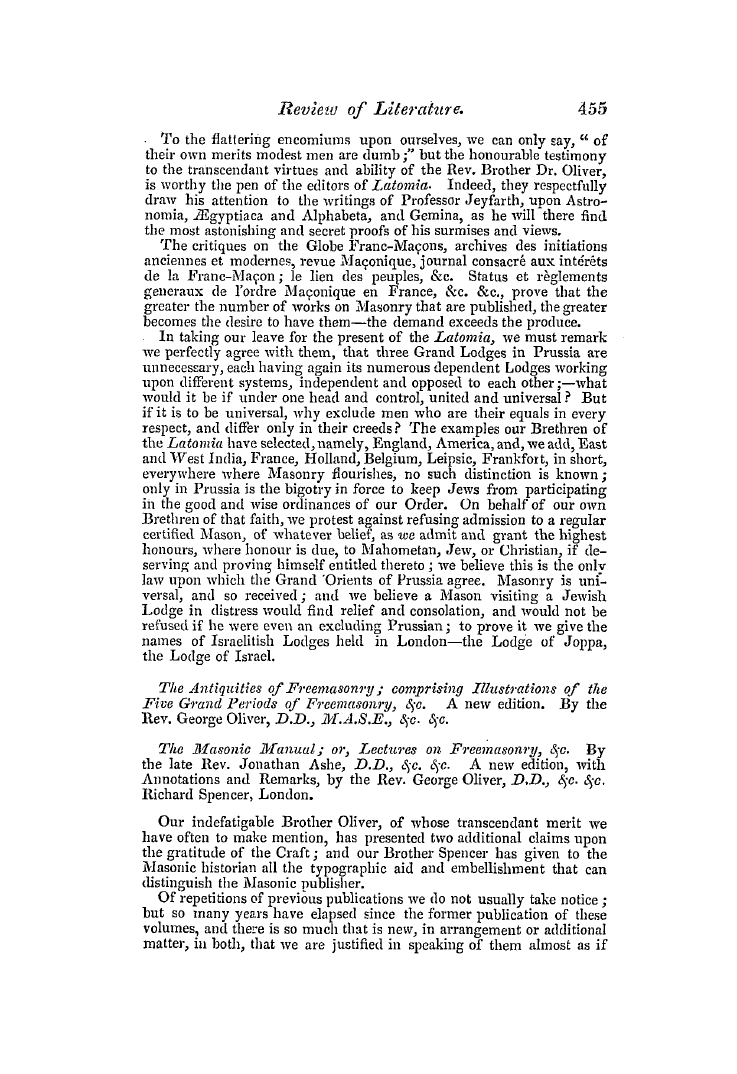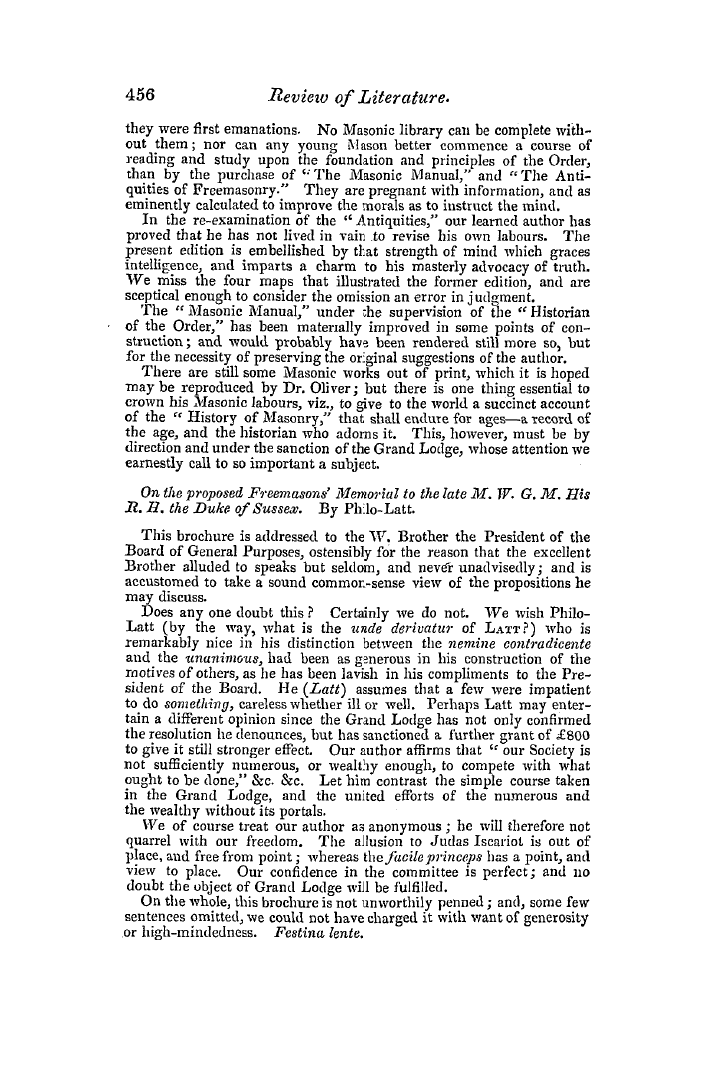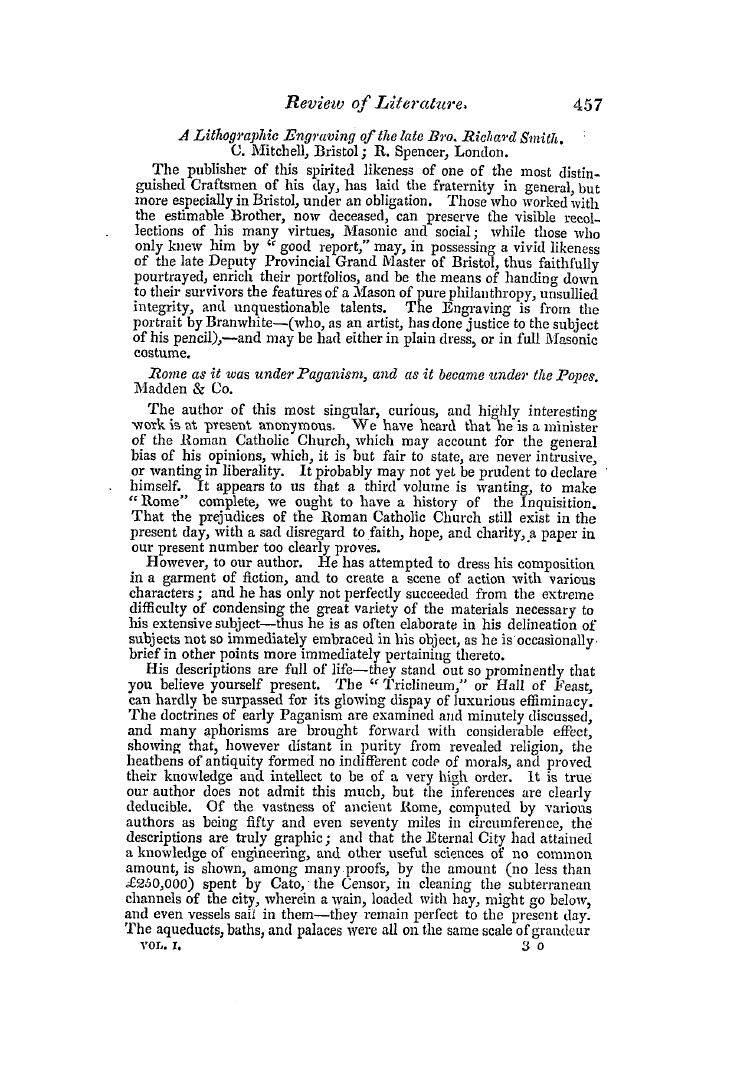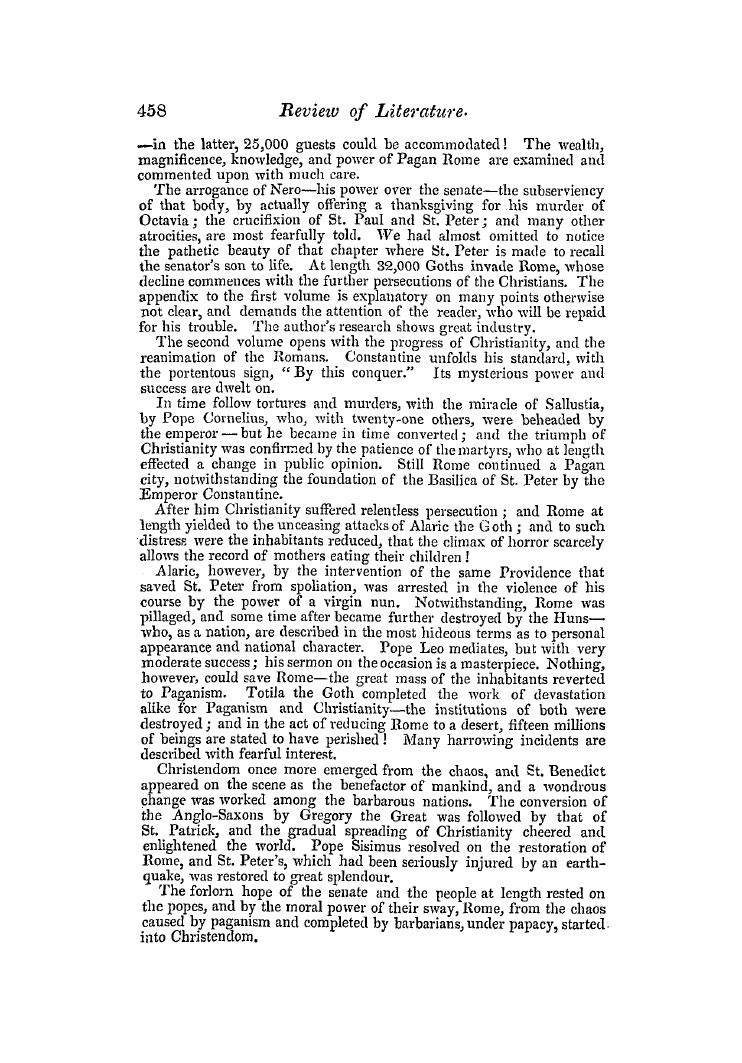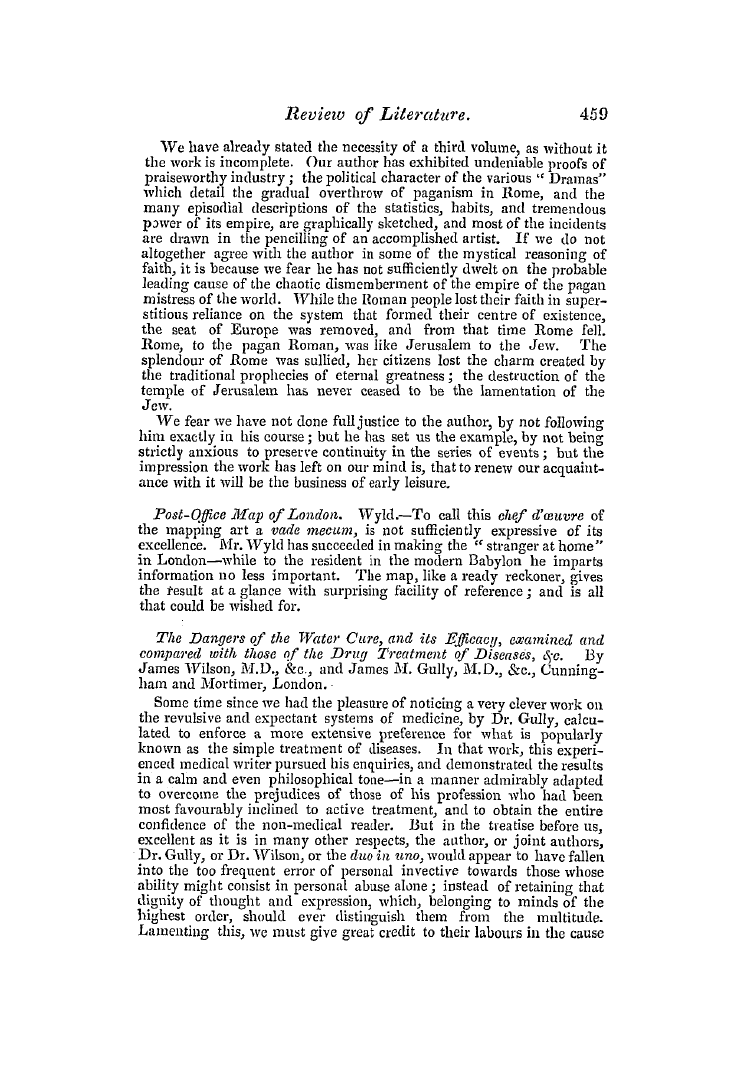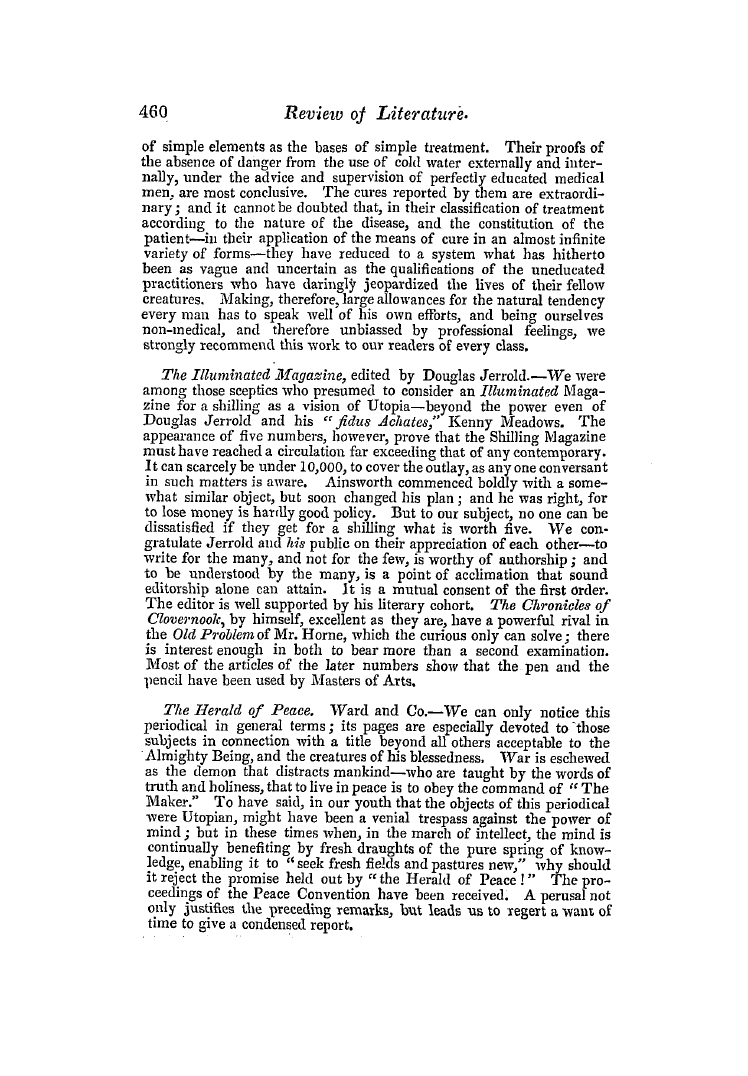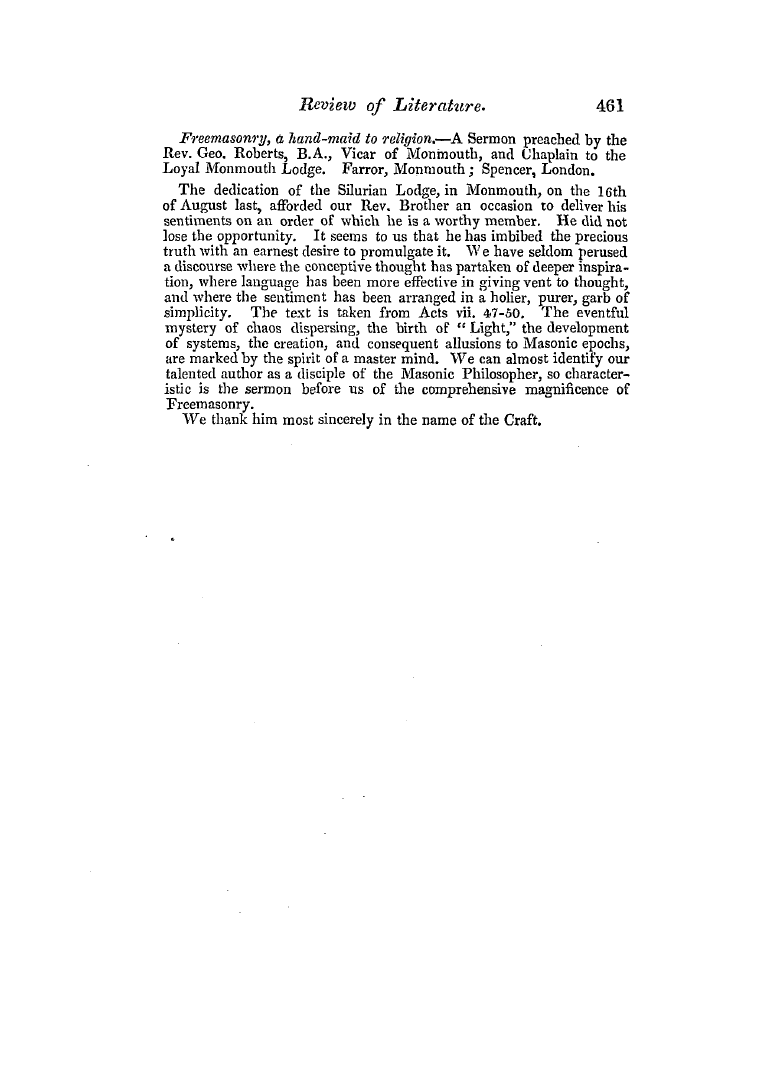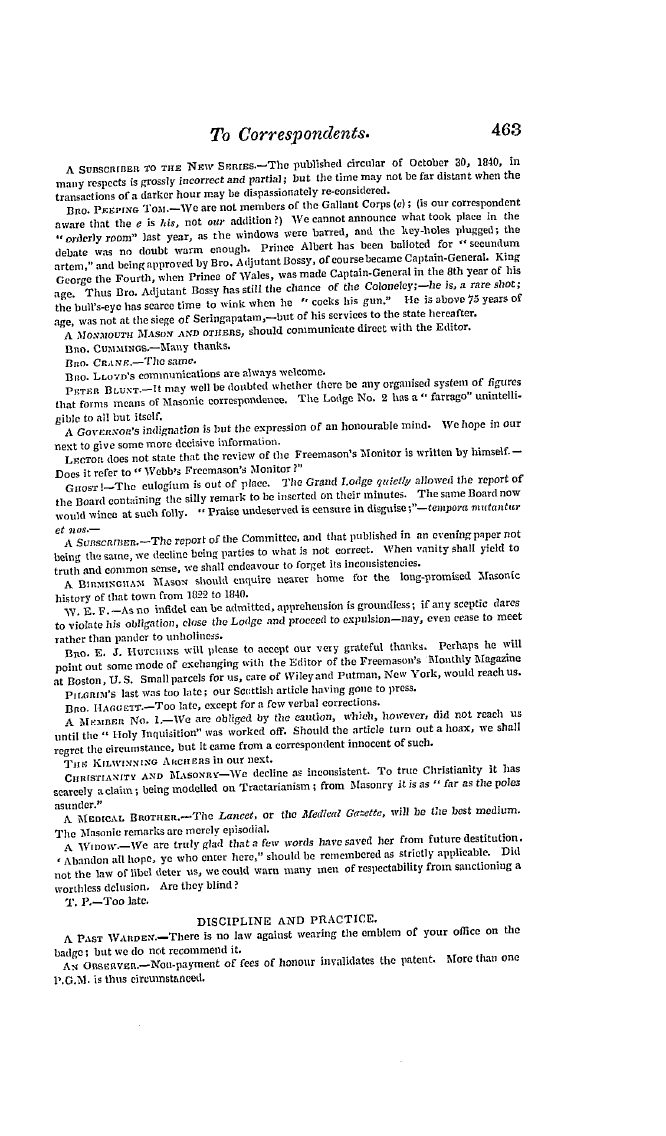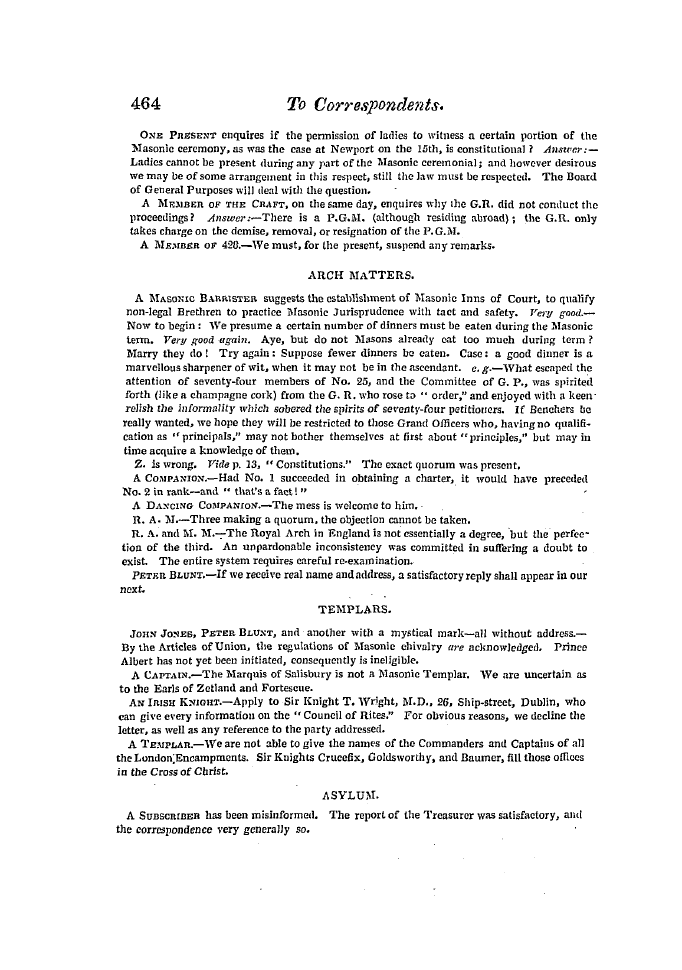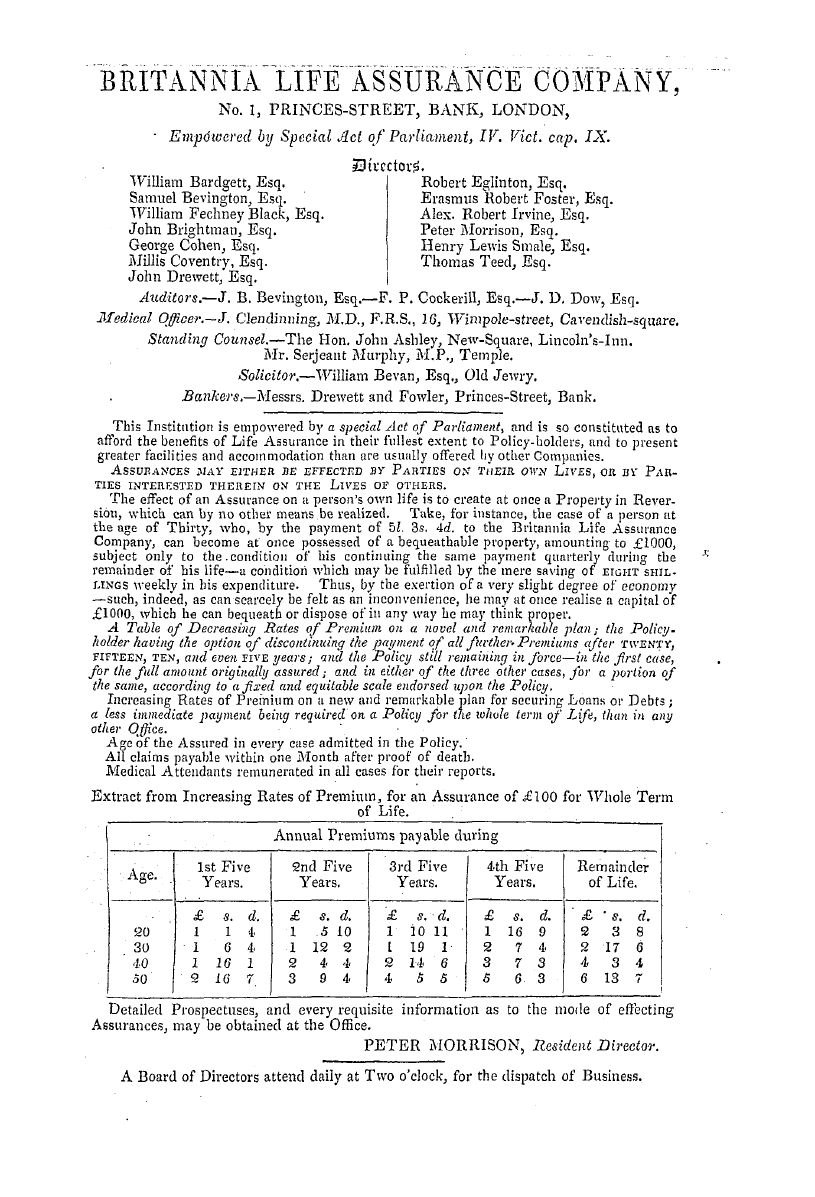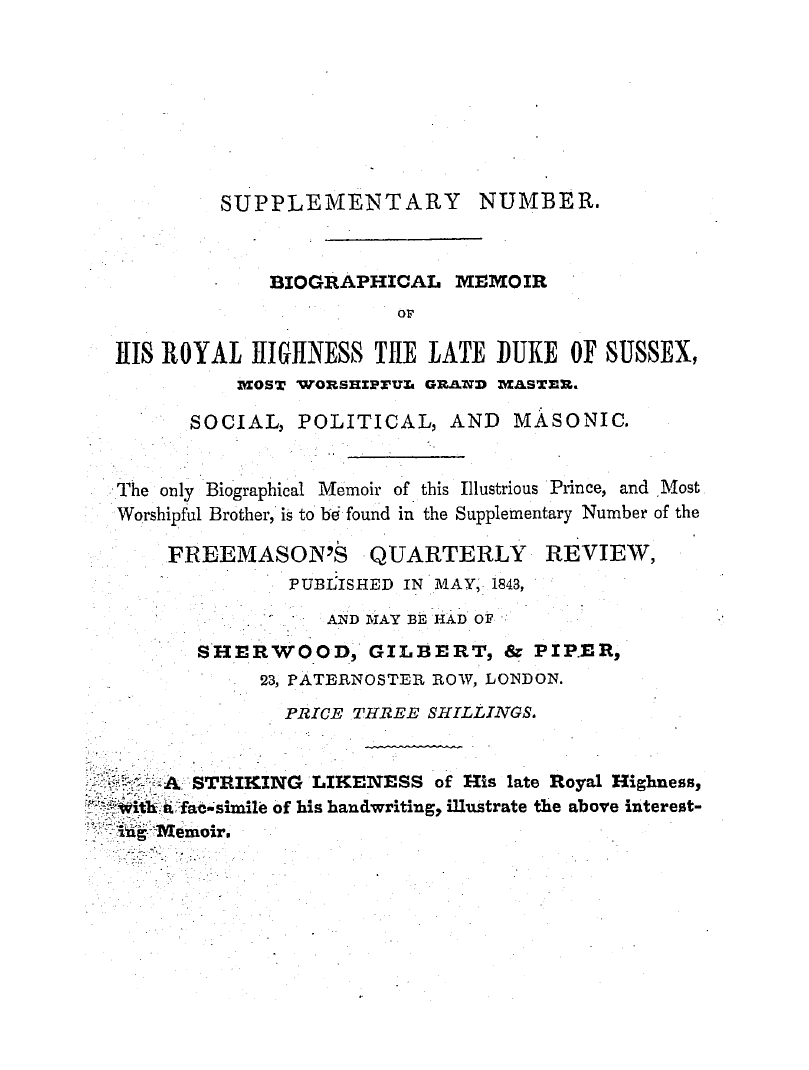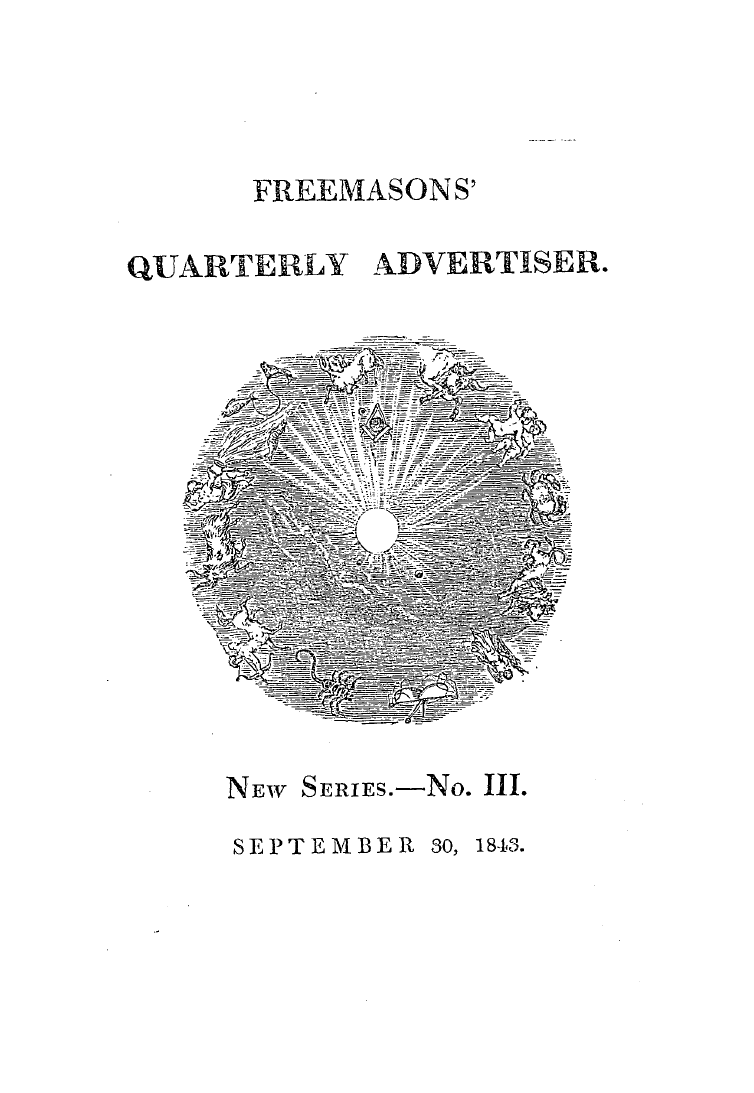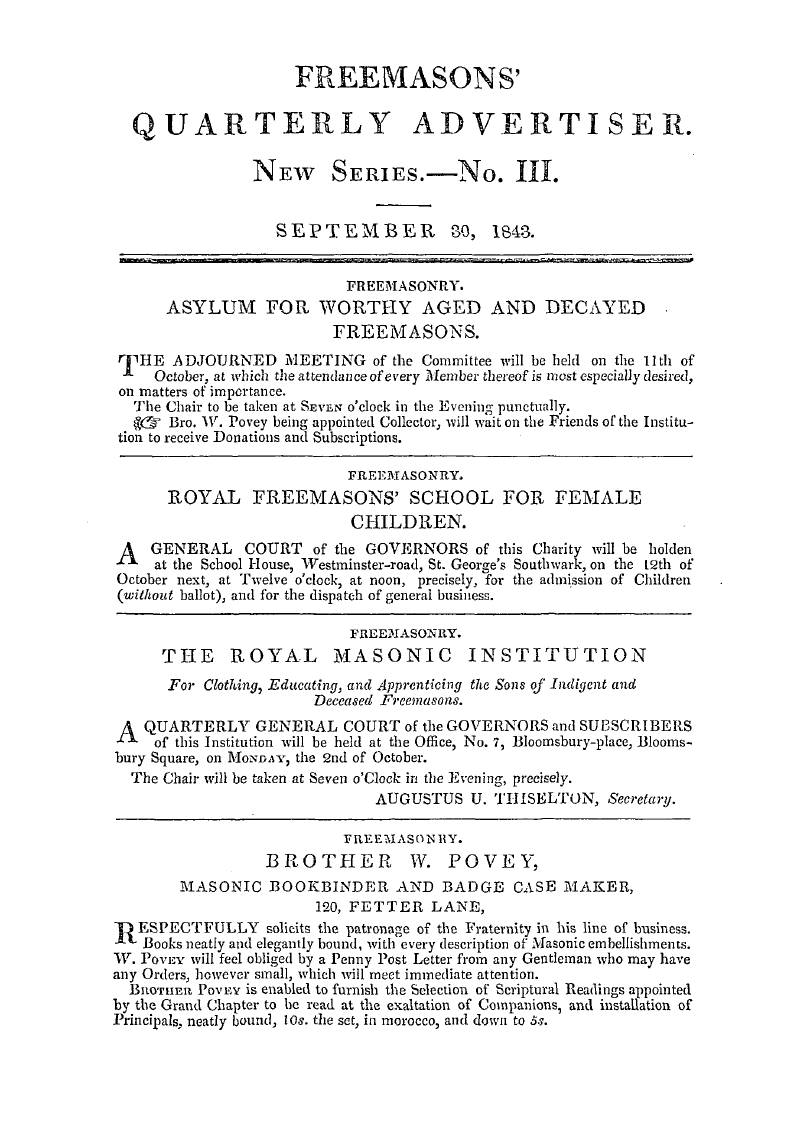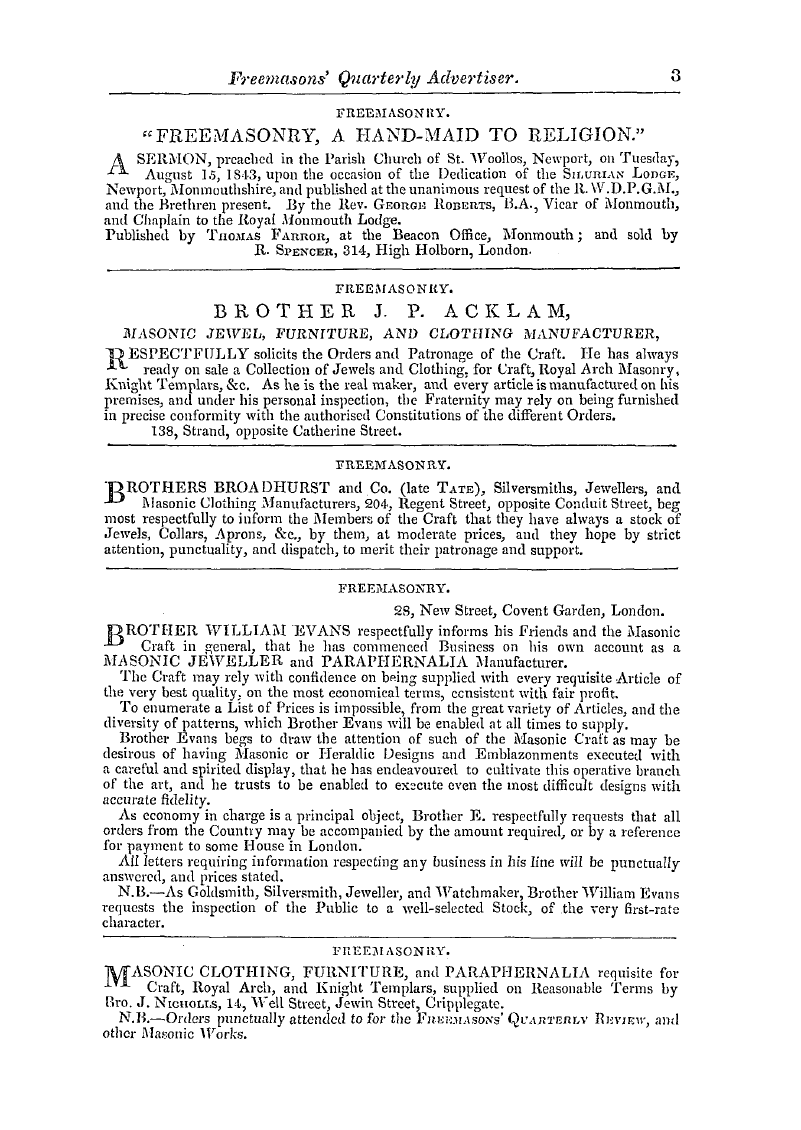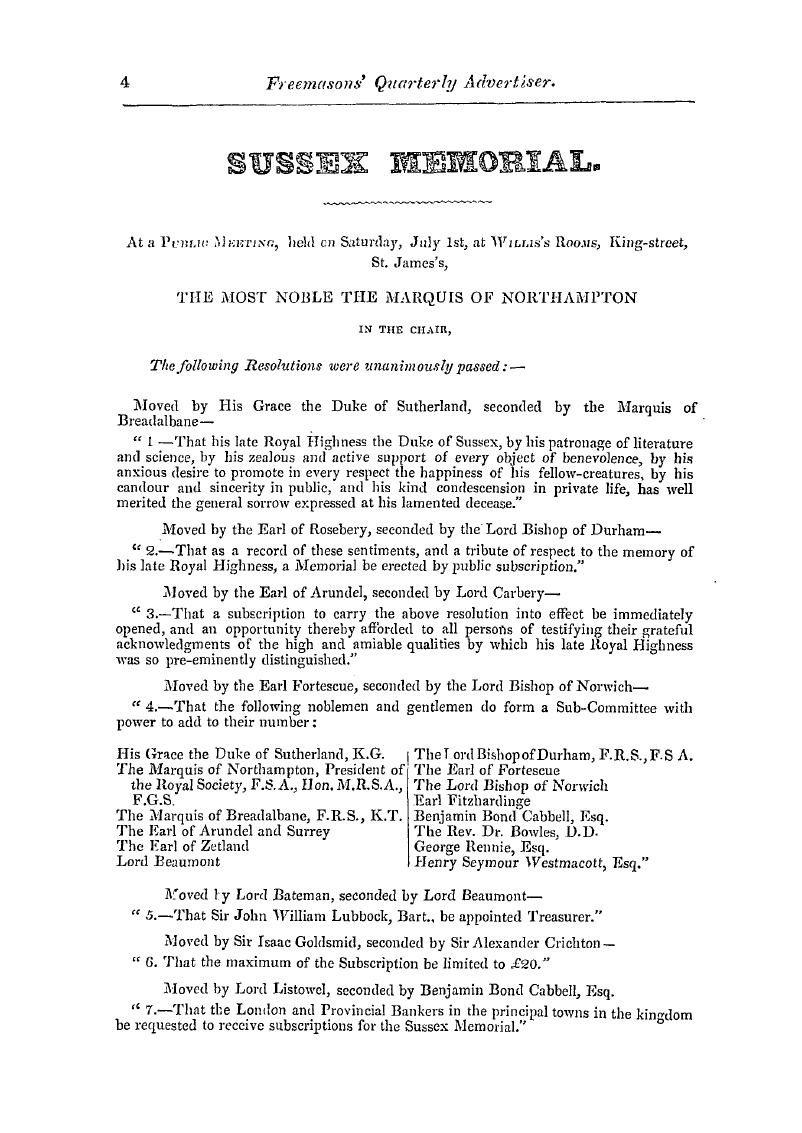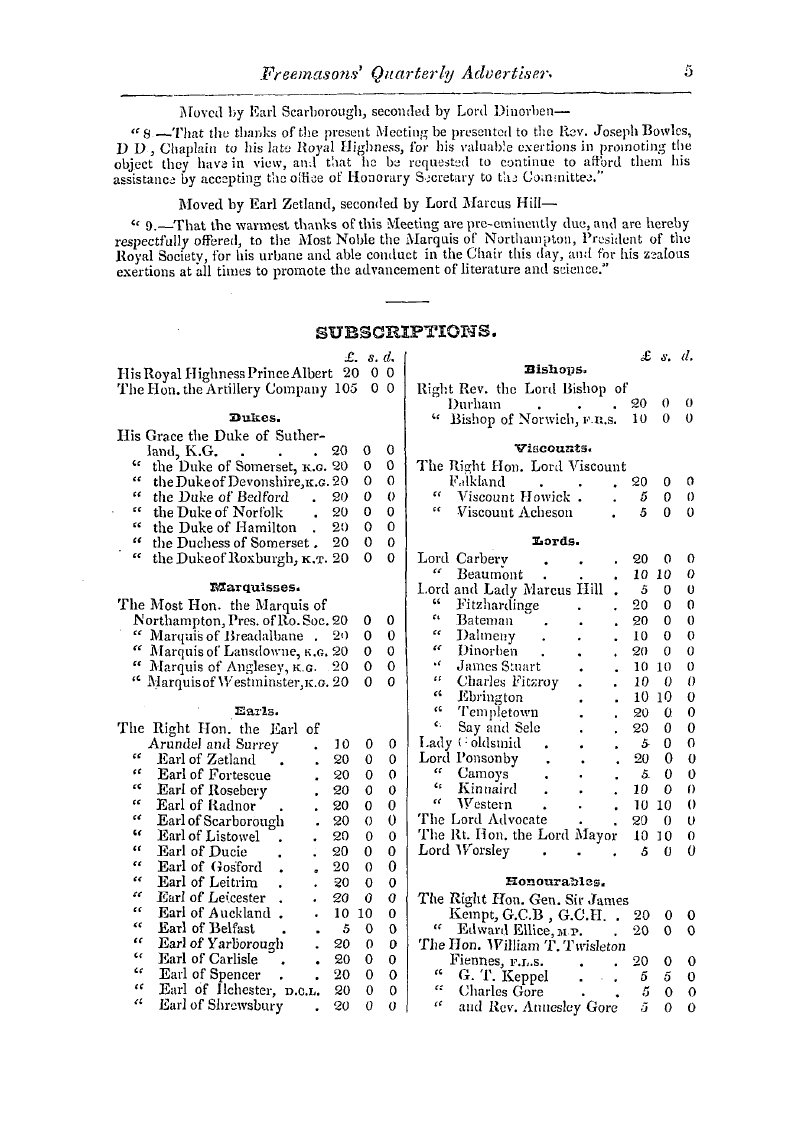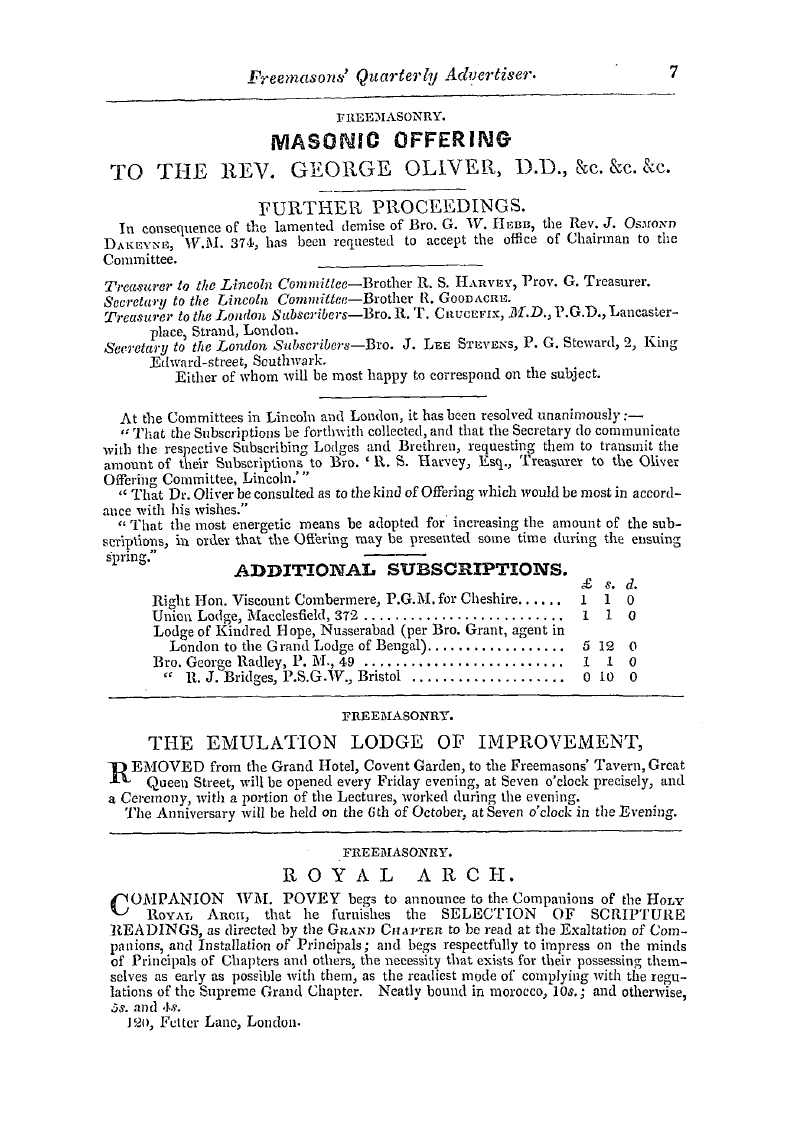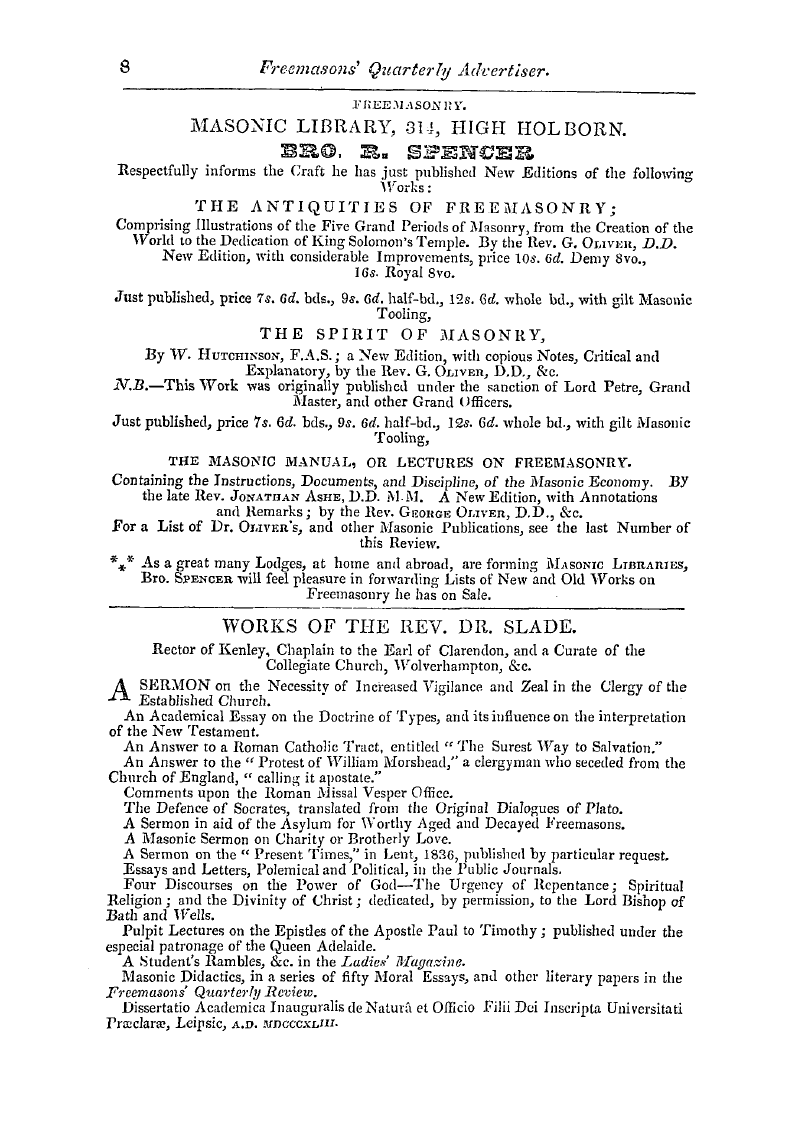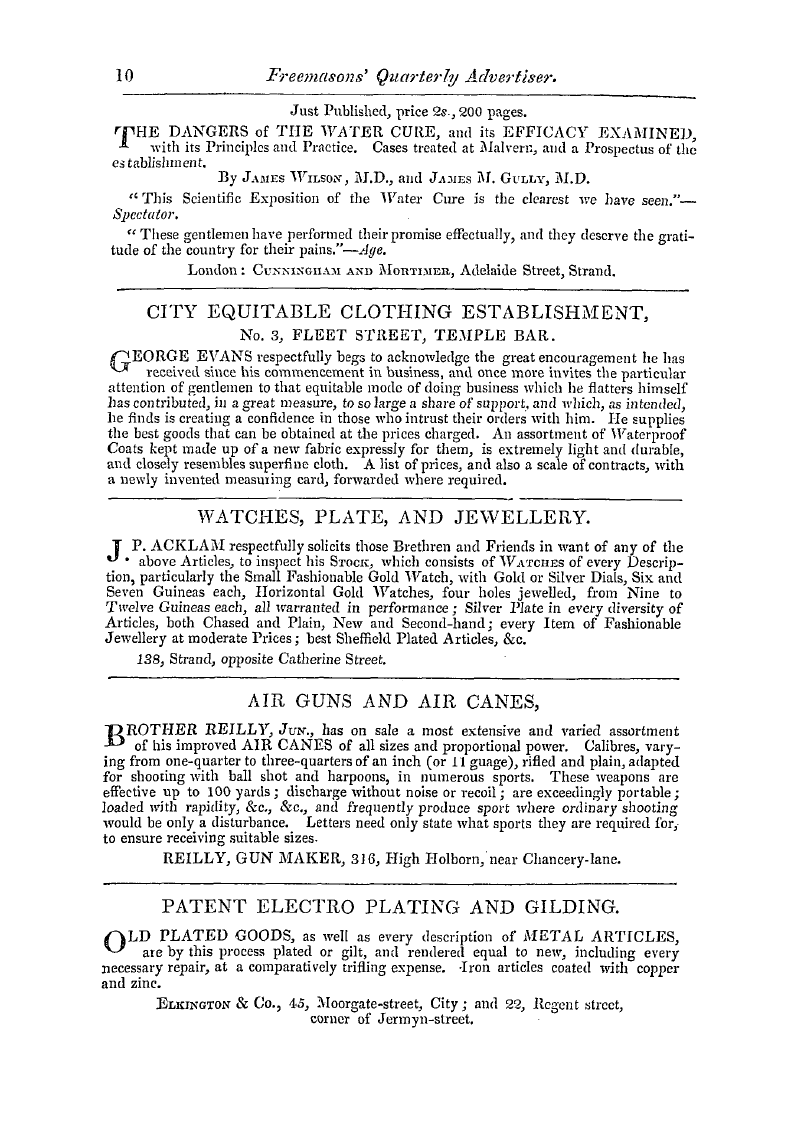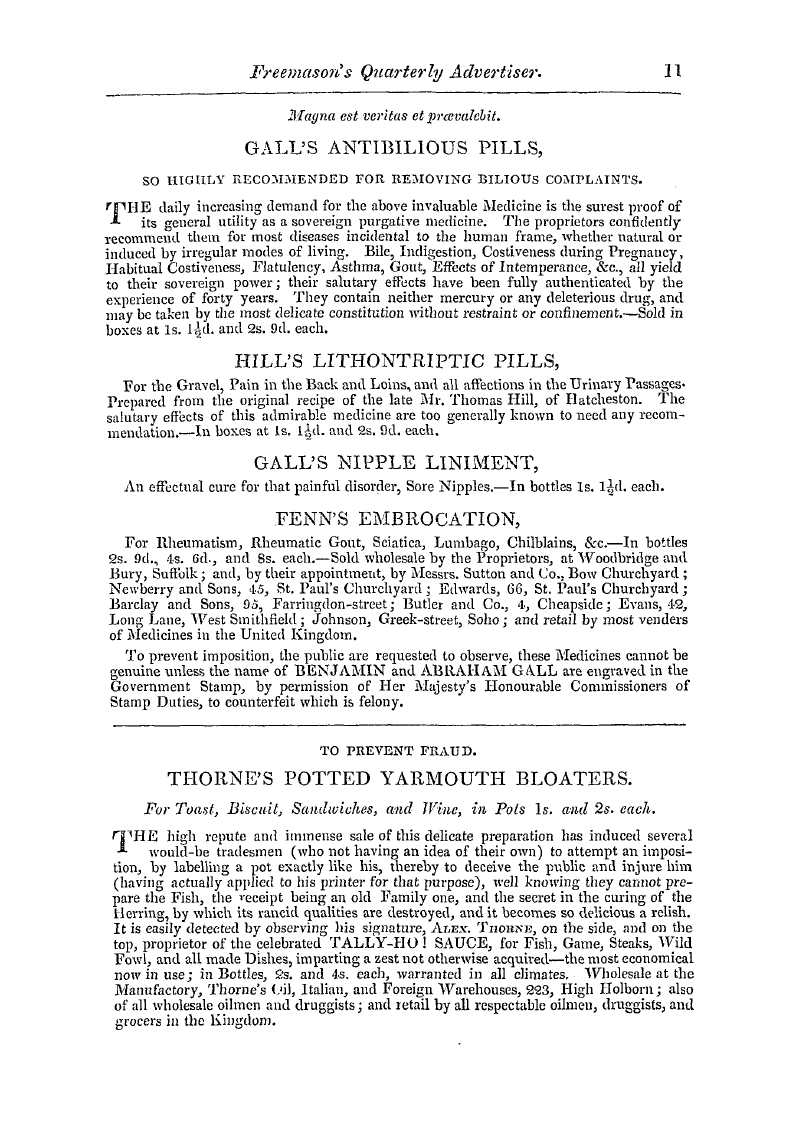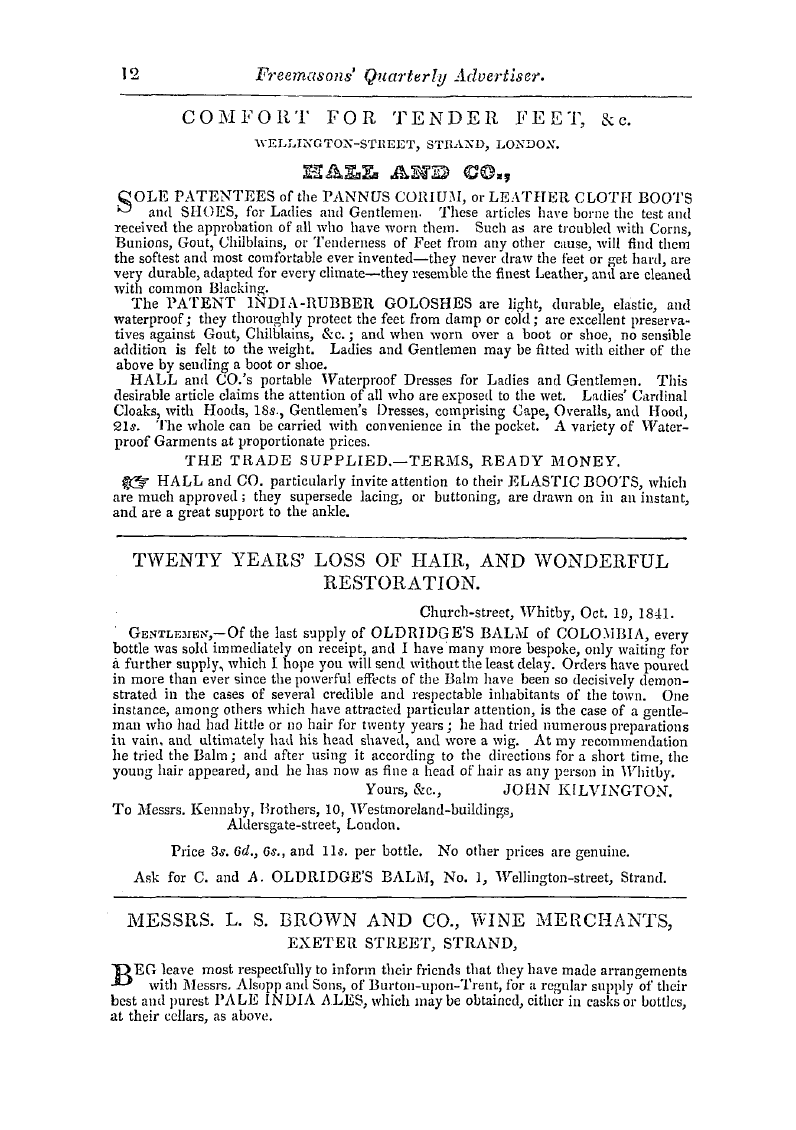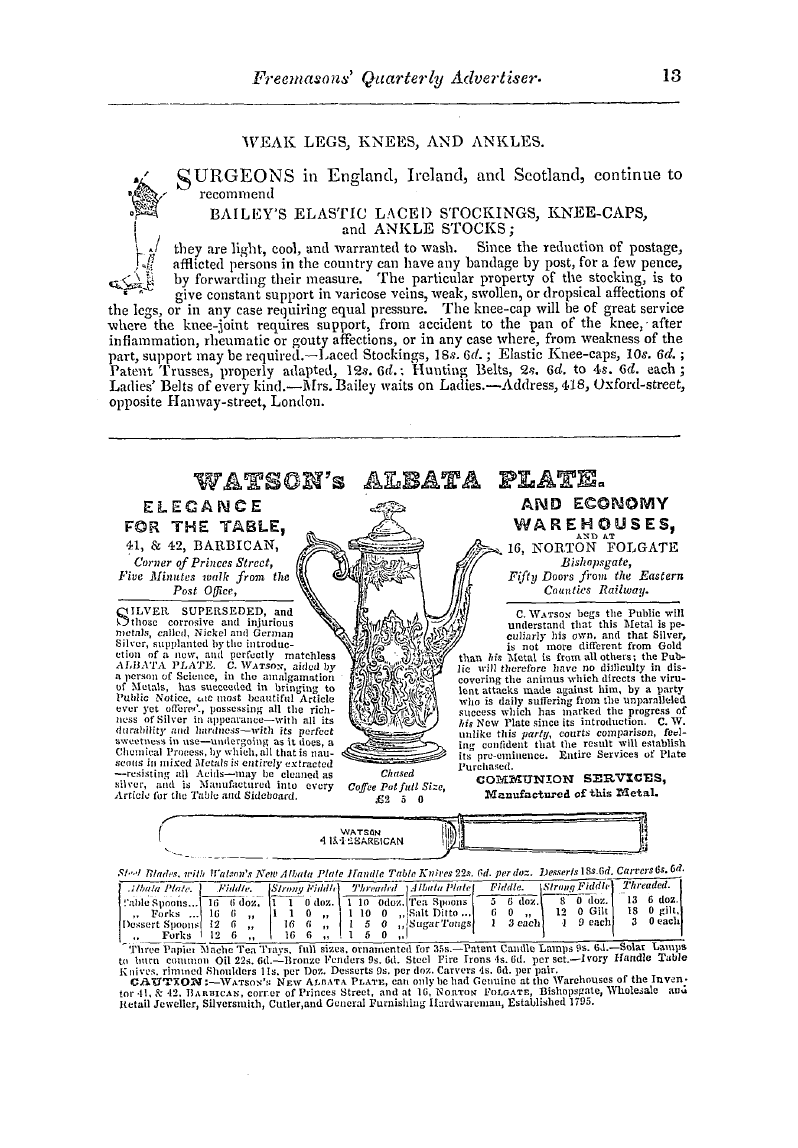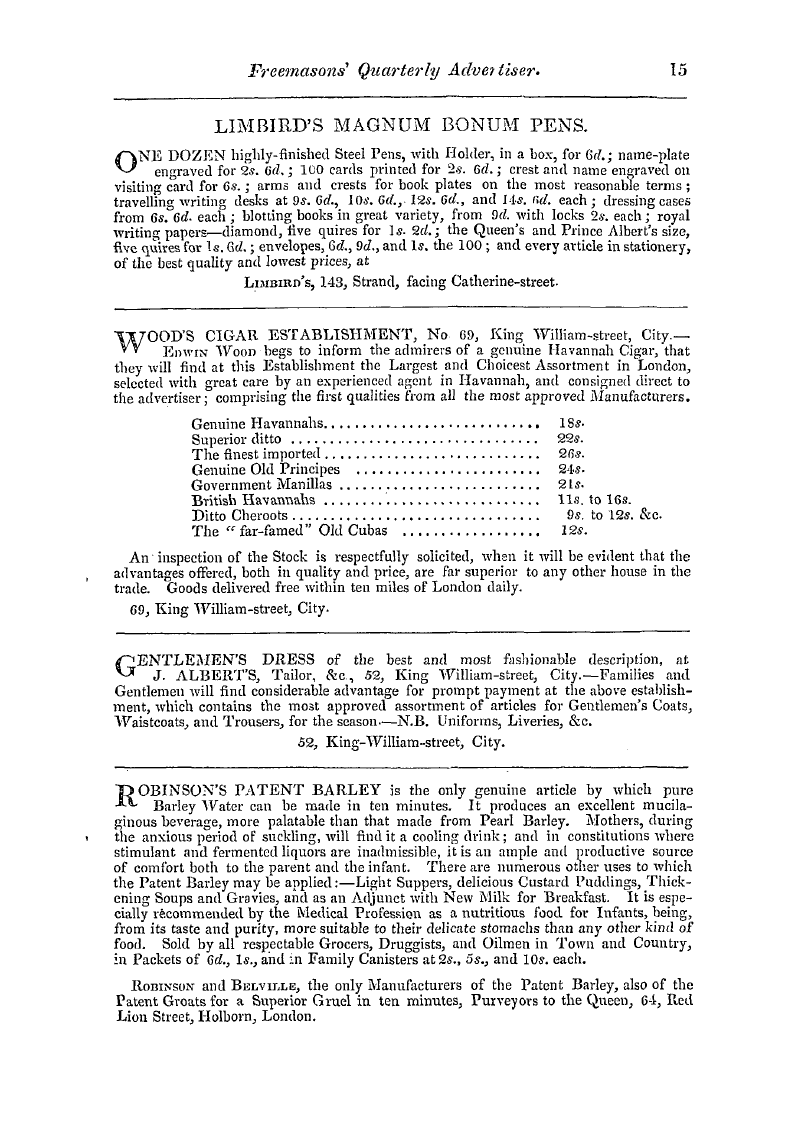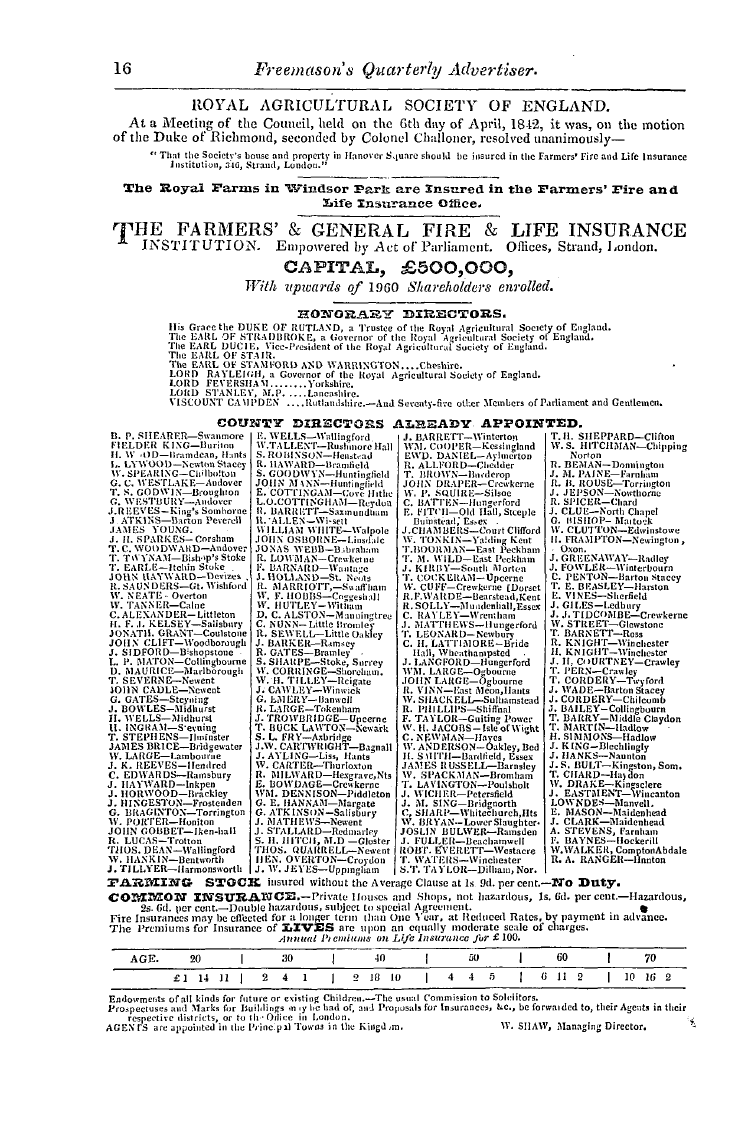-
Articles/Ads
Article ON FREEMASONRY. THE NUMBER THREE. ← Page 10 of 16 →
Note: This text has been automatically extracted via Optical Character Recognition (OCR) software.
On Freemasonry. The Number Three.
There was also a colossal statue of Hercules called Trihesperus ( sprung from the triad of night ) , which is mentioned in a fragment of Nicetas of Choniate . * The Athenians had an altar sacred to Shame—Fame—Impetuosity , and the sacrifices were all triform . The Megarenses placed in the temple of Venus an image of Love—Imeros—Pothos ;
and at Corinth was a triple statue of Jupiter , the first being deemed nameless , the second was called Terrestrial , and the third Most High . In the temple of Diana at the same place was a monument of Pittheus , on which were three thrones ; and near the theatre was a temple with three altars , dedicated to Bacchus , Themis , and the Sun . These
extracts are from Pausanias , who mentions other temples in which the triad was worshipped . In one , Bacchus—Ceres —Proserpine ; in another , Apollo—Minerva—Proserpine ;
and in a third , Zephyrus—Minerva—Neptune , were united objects of adoration . In the temple of Fortune at Thebes , in Bosotia , was a triad of ancient statues of Venus , in her characters of Celestial—Popular—Apostrophia ; and Herodotus refers to another in a floating island near Buto , consecrated to Apollo , which had a triad of altars . Mandesloe
mentions a square pillar in a temple at Mardasch , with the figure of a monarch worshipping a triad , consisting of Sun —Fire—Serpent , lhe Romans carried the same principle into all their social institutions , whether civil , military , or religious : the number three constituting a sort of universal principle to which perfection was attached . Hence
their Tribunes and Triumvirs ; their Castra Tertiata and Triarii ; their Trifax and Triobolum ; their Triens and their Triga ; their Trivium and Triremis , and other matters which originated in a superstitious regard for the ternary form . In the mysteries of India , the doctrine of the trinity was clearly expressed , f but its meaning was rather equivocal ;
Note: This text has been automatically extracted via Optical Character Recognition (OCR) software.
On Freemasonry. The Number Three.
There was also a colossal statue of Hercules called Trihesperus ( sprung from the triad of night ) , which is mentioned in a fragment of Nicetas of Choniate . * The Athenians had an altar sacred to Shame—Fame—Impetuosity , and the sacrifices were all triform . The Megarenses placed in the temple of Venus an image of Love—Imeros—Pothos ;
and at Corinth was a triple statue of Jupiter , the first being deemed nameless , the second was called Terrestrial , and the third Most High . In the temple of Diana at the same place was a monument of Pittheus , on which were three thrones ; and near the theatre was a temple with three altars , dedicated to Bacchus , Themis , and the Sun . These
extracts are from Pausanias , who mentions other temples in which the triad was worshipped . In one , Bacchus—Ceres —Proserpine ; in another , Apollo—Minerva—Proserpine ;
and in a third , Zephyrus—Minerva—Neptune , were united objects of adoration . In the temple of Fortune at Thebes , in Bosotia , was a triad of ancient statues of Venus , in her characters of Celestial—Popular—Apostrophia ; and Herodotus refers to another in a floating island near Buto , consecrated to Apollo , which had a triad of altars . Mandesloe
mentions a square pillar in a temple at Mardasch , with the figure of a monarch worshipping a triad , consisting of Sun —Fire—Serpent , lhe Romans carried the same principle into all their social institutions , whether civil , military , or religious : the number three constituting a sort of universal principle to which perfection was attached . Hence
their Tribunes and Triumvirs ; their Castra Tertiata and Triarii ; their Trifax and Triobolum ; their Triens and their Triga ; their Trivium and Triremis , and other matters which originated in a superstitious regard for the ternary form . In the mysteries of India , the doctrine of the trinity was clearly expressed , f but its meaning was rather equivocal ;































































